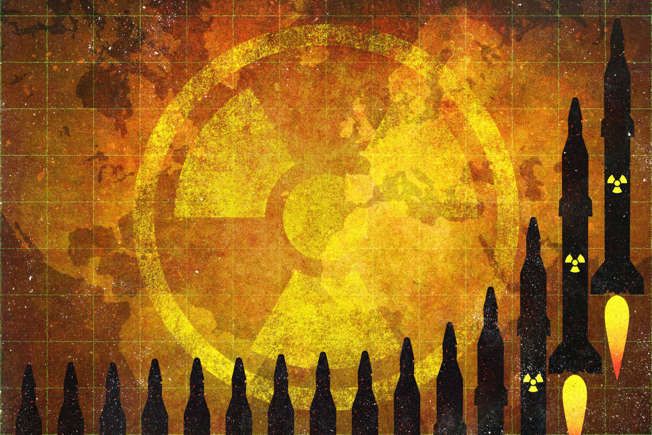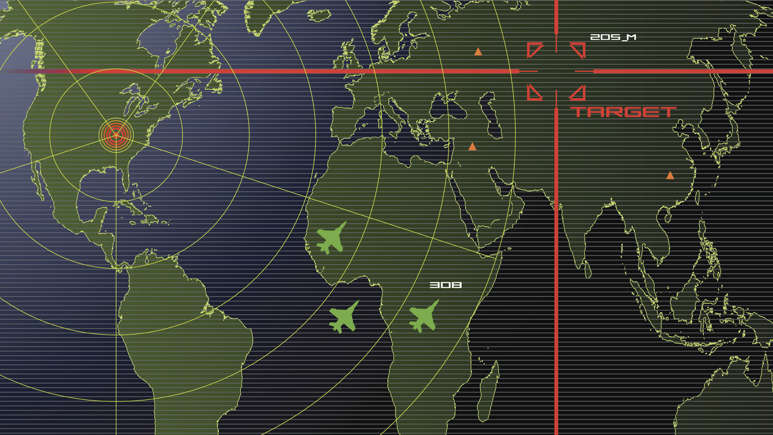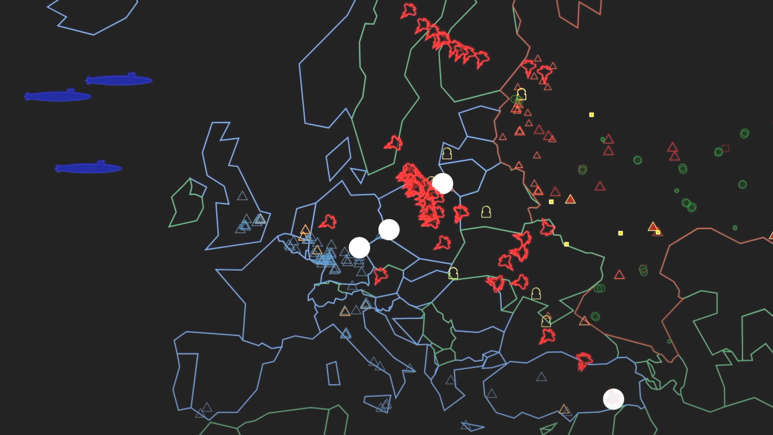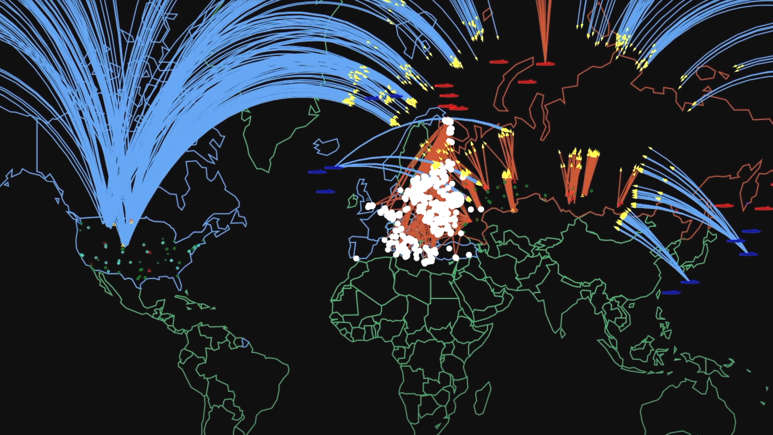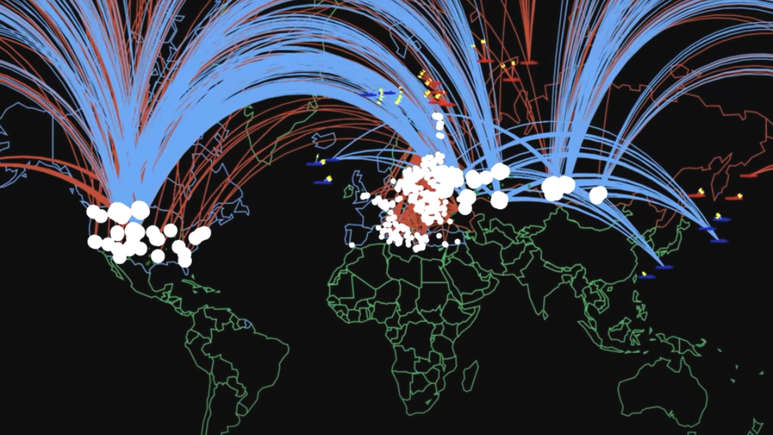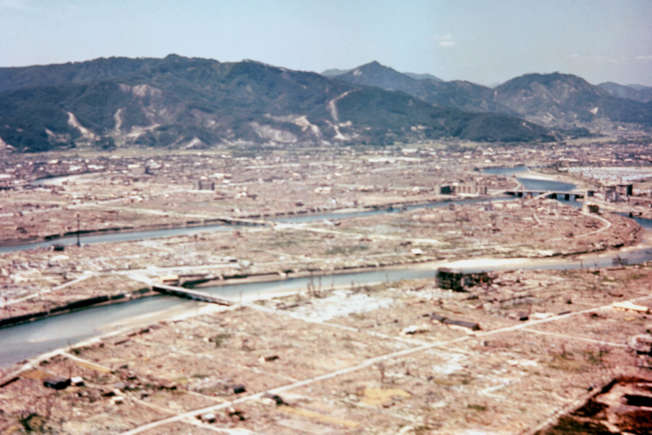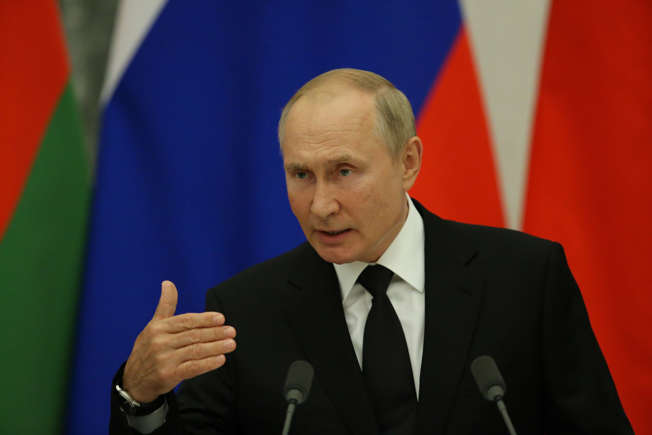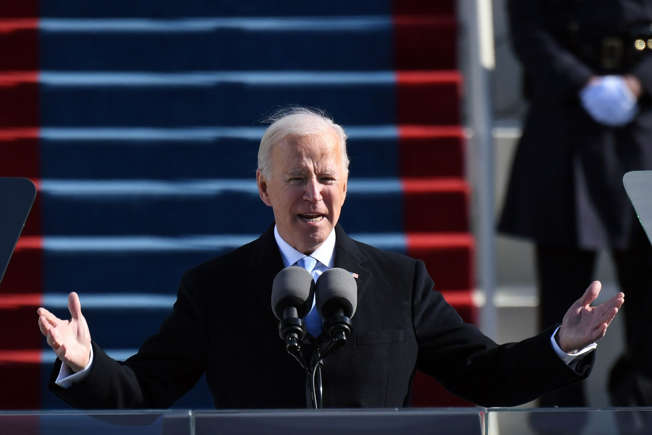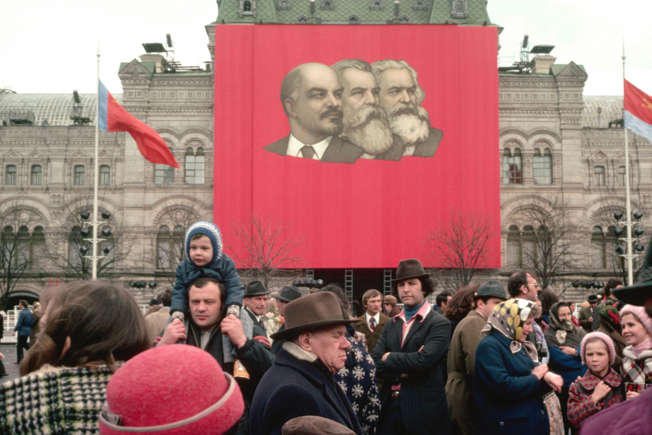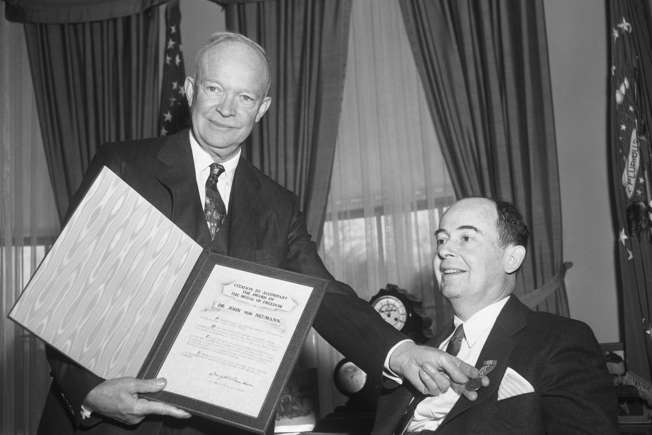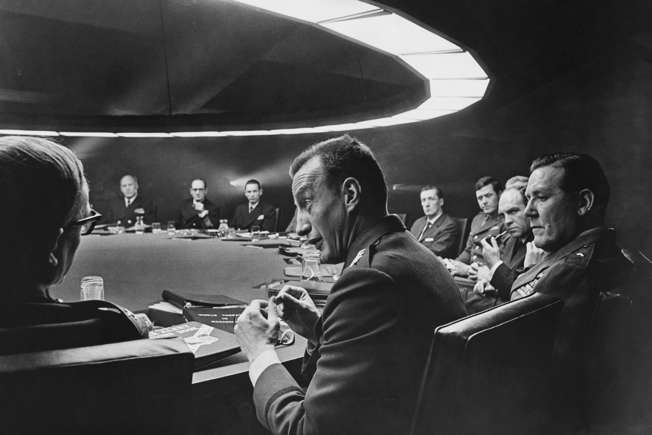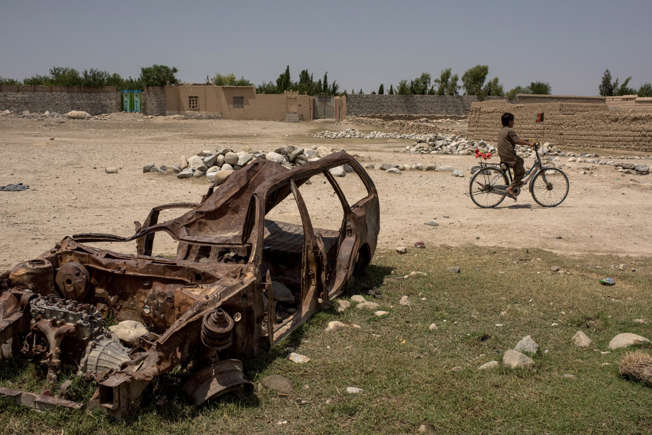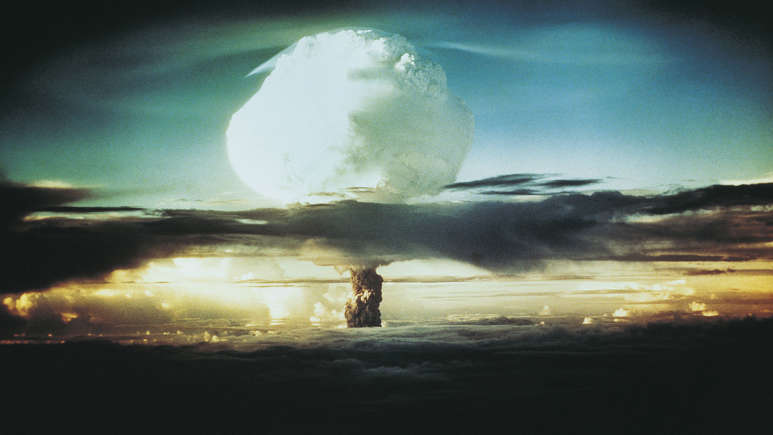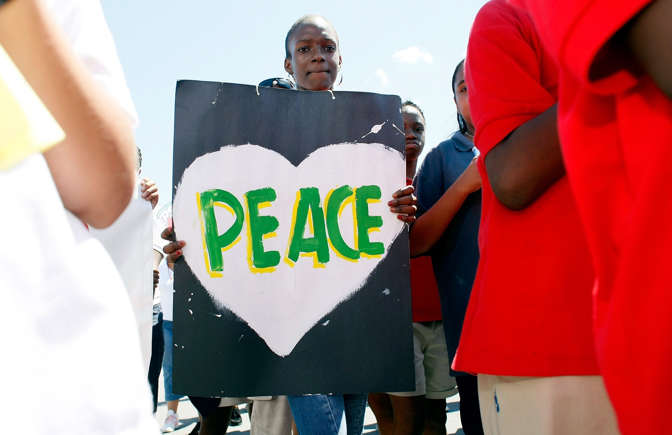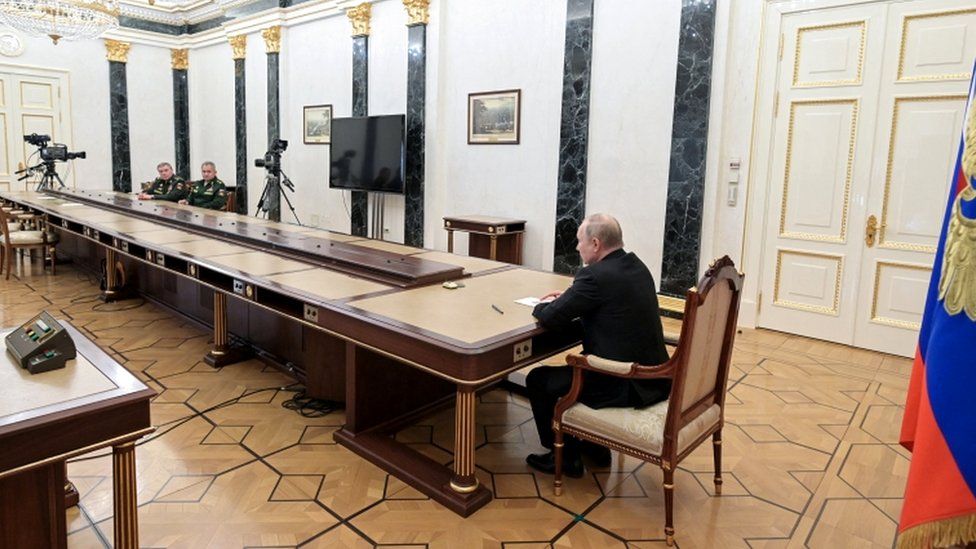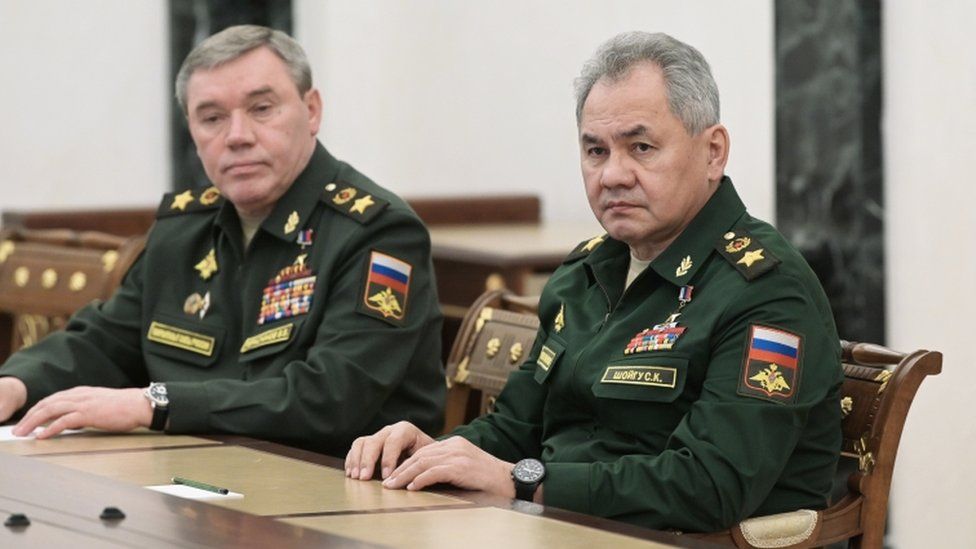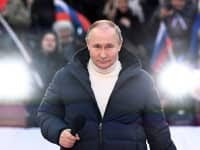How A Nuclear War Starts Second By Second Timeline
HowANuclearWarStartsSecondBySecondTimeline
Doomsday: What could drive Israel and Iran to start launching nuclear weapons?
Here's How Bad a Nuclear War Would Actually Be | TIME
Israel’s (not-so) secret plan to prevent a nuclear Iran and create a new Middle East
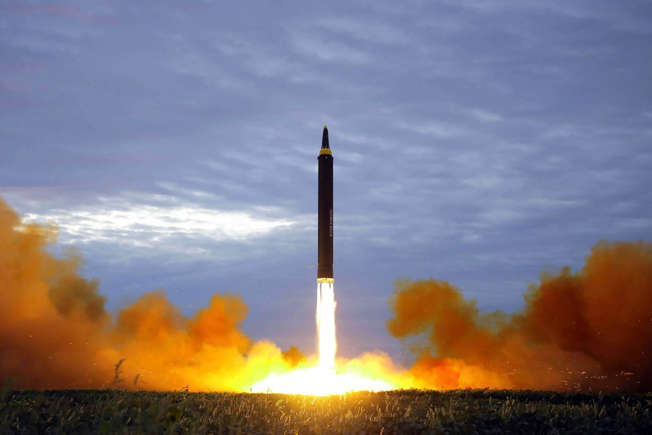
Many countries have a considerable number of nuclear weapons in their arsenals. In recent years, world peace has been guaranteed by the simple fact that none of them have been used.
World ‘at Brink of Abyss That Could Change Trajectory of Israeli-Palestinian Conflict’, Middle East Coordinator Warns Security Council | Meetings Coverage and Press Releases
Facebook Isaiah prophesied the destruction and abandonment of Damascus, Syria over 2700 years ago
View from Israel: Could Netanyahu attack Iran’s nuclear program? It’s not so easy | European Leadership Network
Iran Attacks Israel With Ballistic Missiles And DronesIranAttacksIsraelWithBallisticMissilesAndDrones
Israel’s war on Gaza live: Israel says Iran has begun attacks | Israel War on Gaza News | Al Jazeera
How A Nuclear ,War Starts Second By Second Timeline
Annie Jacobsen And Lex Fridman Part 1 of 6
How A Nuclear ,War Starts Second By Second Timeline
Annie Jacobsen And Lex Fridman Part 2 of 6
How A Nuclear ,War Starts Second By Second Timeline
Annie Jacobsen And Lex Fridman Part 3 of 6
HowANuclearWar StartsSecondByecSondTimelineAnnieJacobsenAnd LexFridmanP3of6.mp4
How A Nuclear ,War Starts Second By Second Timeline
Annie Jacobsen And Lex Fridman Part 4 of 6
How A Nuclear ,War Starts Second By Second Timeline
Annie Jacobsen And Lex Fridman Part 5 of 6
How A Nuclear ,War Starts Second By Second Timeline
Annie Jacobsen And Lex Fridman Part 6 of 6
Putin Scares World Leaders
PutinScaresWorldLeaders
-
Handy Easy Email and World News Links WebMail
GoogleSearch INLTV.co.uk YahooMail HotMail GMail - news.sky.com/watch-live New York Post nypost.com YouTube
We know that an all-out U.S.-Russia nuclear war would be bad. But how bad, exactly? How do your chances of surviving the explosions, radiation, and nuclear winter depend on where you live? The past year’s unprecedented nuclear saber-rattling and last weekend’s chaos in Russia has made this question timely. To help answer it, I’ve worked with an amazing interdisciplinary group of scientists (see end credits) to produce the most scientifically realistic simulation of a nuclear war using only unclassified data, and visualize it as a video. It combines detailed modeling of nuclear targeting, missile trajectories, blasts and the electromagnetic pulse, and of how black carbon smoke is produced, lofted and spread across the globe, altering the climate and causing mass starvation.
As the video illustrates, it doesn’t matter much who starts the war: when one side launches nuclear missiles, the other side detects them and fires back before impact. Ballistic missiles from U.S. submarines west of Norway start striking Russia after about 10 minutes, and Russian ones from north of Canada start hitting the U.S. a few minutes later. The very first strikes fry electronics and power grids by creating an electro-magnetic pulse of tens of thousands of volts per meter. The next strikes target command-and-control centers and nuclear launch facilities. Land-based intercontinental ballistic missiles take about half an hour to fly from launch to target.
Major cities are targeted both because they contain military facilities and to stymie the enemy’s post-war recovery. Each impact creates a fireball about as hot as the core of the sun, followed by a radioactive mushroom cloud. These intense explosions vaporize people nearby and cause fires and blindness further away. The fireball expansion then causes a blast wave that damages buildings, crushing nearby ones. The U.K. and France have nuclear capabilities and are obliged by NATO’s Article 5 to defend the U.S. so, Russia hits them too. Firestorms engulf many cities, where storm-level winds fan the flames, igniting anything that can burn, melting glass and some metals and turning asphalt into flammable hot liquid.
Unfortunately, peer-reviewed research suggests that explosions, the electromagnetic pulse, and the radioactivity aren’t the worst part: a nuclear winter is caused by the black carbon smoke from the nuclear firestorms. The Hiroshima atomic bomb caused such a firestorm, but today’s hydrogen bombs are much more powerful. A large city like Moscow, with almost 50 times more people than Hiroshima, can create much more smoke, and a firestorm that sends plumes of black smoke up into the stratosphere, far above any rain clouds that would otherwise wash out the smoke. This black smoke gets heated by sunlight, lofting it like a hot air balloon for up to a decade. High-altitude jet streams are so fast that it takes only a few days for the smoke to spread across much of the northern hemisphere.
This makes Earth freezing cold even during the summer, with farmland in Kansas cooling by about 20 degrees centigrade (about 40 degrees Fahrenheit), and other regions cooling almost twice as much. A recent scientific paper estimates that over 5 billion people could starve to death, including around 99% of those in the US, Europe, Russia, and China – because most black carbon smoke stays in the Northern hemisphere where it’s produced, and because temperature drops harm agriculture more at high latitudes.
It’s important to note that huge uncertainties remain, so the actual humanitarian impact could be either better or worse – a reason to proceed with caution. A recently launched $4M open research program will hopefully help clarify public understanding and inform the global policy conversation, but much more work is needed, since most of the research on this topic is classified and focused on military rather than humanitarian impacts.
We obviously don’t know how many people will survive a nuclear war. But if it’s even remotely as bad as this study predicts, it has no winners, merely losers. It’s easy to feel powerless, but the good news is that there is something you can do to help: please help share this video! The fact that nuclear war is likely to start via gradual escalation, perhaps combined by accident or miscalculation, means that the more people know about nuclear war, the more likely we are to avoid having one.
MORE MUST-READS FROM TIME
- The 100 Most Influential People of 2024
- The Revolution of Yulia Navalnaya
- 6 Compliments That Land Every Time
- Stop Looking for Your Forever Home
- If You're Dating Right Now , You're Brave: Column
- The AI That Could Heal a Divided Internet
- Fallout Is a Brilliant Model for the Future of Video Game Adaptations
- Want Weekly Recs on What to Watch, Read, and More? Sign Up for Worth Your Time
CONTACT US AT This email address is being protected from spambots. You need JavaScript enabled to view it.
Doomsday: What could drive Israel and Iran to start launching nuclear weapons?
Doomsday: What could drive Israel and Iran to start launching nuclear weapons?
BY LOUIS BERES, OPINION CONTRIBUTOR 01/04/24
Although Israel’s Gaza war is most visibly being waged against Hamas, the ultimate adversary is Iran. If Israel’s counter-terrorism efforts should sometime bring it into direct confrontation with Iran, the result could be an immediate escalation between these two adversary states.
In such a plausible scenario, even a still-pre-nuclear Iran could elicit a “limited” Israeli nuclear reprisal. The principal escalation dangers would be an Iranian use of radiation dispersal weapons or an Iranian rocket attack on Israel’s Dimona nuclear reactor.
For Israel, a country smaller than Lake Michigan, nuclear weapons and strategy remain essential to national survival. Israel’s traditional policy of deliberate nuclear ambiguity, or “the bomb in the basement,” goes back to its early days. During the 1950s, Prime Minister David Ben-Gurion understood the need for a dramatic “equalizer” against larger and more populous regional enemies.
Today, facing a recalcitrant and soon-to-be nuclear Iran, Israel needs to update and refine its policy of deliberate nuclear ambiguity. The key objective of such needed changes would be credible nuclear deterrence, a goal that will now require selective nuclear disclosure. Though ironic and counter-intuitive, Iran will need to be convinced that Israel’s nuclear arms are not too destructive for actual use.
There will be perplexing nuances. For Israel to fashion reason-based nuclear policies, Iran should be considered rational. But it is conceivable that Iran might act irrationally, perhaps even in alliance with other states (such as Syria or North Korea) or kindred terror groups (such as Hamas, Hezbollah, Palestinian Islamic Jihad or the Houthis).
Unless Jerusalem were to consider Pakistan an authentic enemy, Israel presently has no already-nuclear enemies. Still, as an unstable Islamic state, Pakistan is potentially subject to a coup d’état by assorted Jihadist elements and is closely aligned with Saudi Arabia. The Sunni Saudi kingdom could sometime decide to “go nuclear” itself because of Shiite Iran’s steadily accelerating nuclear progress.
For Israel’s nuclear deterrence to work longer-term, Iran will need to be told more rather than less about Israel’s nuclear targeting doctrine and the invulnerability of Israel’s nuclear forces. In concert with such changes, Jerusalem will need to clarify its still-opaque “Samson Option.” The point would not be to “die with the Philistines” (per the biblical Book of Judges), but to enhance “high destruction” options of its nuclear deterrence posture.
Though the only gainful purpose of Israel’s nuclear weapons should be deterrence at different levels of military destructiveness, there will remain circumstances under which Israeli nuclear deterrence could fail. How might such intolerable circumstances arise? Four distinct scenarios emerge, with results that range from very destructive to catastrophic.
First, if Iran were to launch “only” a massive conventional attack on Israel, Jerusalem could respond with a limited nuclear retaliation. If Iranian first-strikes were to involve chemical or biological weapons, Israel might also decide to launch a measured nuclear reprisal.
This decision would depend, in large part, on Jerusalem’s expectations concerning follow-on Iranian attacks and its calculations of comparative damage-limitation. A nuclear retaliation by Israel could be ruled out conclusively only in circumstances where the Iranian aggression is entirely conventional and “hard-target” oriented — that is, oriented toward Israeli weapons and military infrastructures, not toward Israel’s civilian populations.
A second scenario would involve Israel feeling compelled to preempt Iranian aggression with conventional weapons. In that case, that enemy state’s response would largely determine Israel’s next moves. If this response were in any way nuclear, including “mere” radiological weapons, Israel would likely turn to certain controlled forms of nuclear counter-retaliation. If Iran’s retaliation were to involve other non-nuclear weapons of mass destruction, Israel could still feel pressed to take the escalatory initiative. This decision would depend upon Jerusalem’s considered judgment of enemy intent and on its corollary calculations of damage-limitation.
If the Iranian response to Israel’s preemption were limited to hard-target conventional strikes, it is unlikely that Israel’s decision-makers would go nuclear. If, however, the Iranian conventional retaliation was “all-out” and directed in part toward Israeli civilian populations, an Israeli nuclear counter-retaliation could not be excluded. Such a counter-retaliation could be ruled out only if Iran’s conventional retaliation were proportionate to Israel’s preemption; confined to Israeli military targets; circumscribed by legal limits of “proportionality” and “military necessity,” and accompanied by verifiable assurances of non-escalatory intent.
A third (and highly unlikely) scenario involves Israel launching a preemptive nuclear strike against Iran. Although circumstances could arise wherein such a strike would be rational and permissible under international law, it is improbable that Israel would allow itself to reach such end-of-the-line circumstances. An Israeli nuclear preemption could reasonably be expected only if Iran had already acquired nuclear or other weapons of mass destruction, threatened to use them, began a countdown to launch, and Jerusalem believed that exclusively conventional preemption could not save the Jewish State from destruction.
A fourth scenario would be that of nuclear war fighting. This could occur if an Iranian nuclear first-strike or retaliation for an Israeli conventional first strike failed to destroy Israel’s second-strike nuclear capability, or vice versa.
For the time being, of course, any Iranian nuclear capacity would be limited to radiation dispersal weapons.
Louis René Beres is professor emeritus of International Law at Purdue University and author of “Surviving Amid Chaos: Israel’s Nuclear Strategy” (2018).
World ‘at Brink of Abyss That Could Change Trajectory of Israeli-Palestinian Conflict’, Middle East Coordinator Warns Security Council
Many Speakers Lament Organ’s Inaction, Urge Immediate End to Violence
The international community must urgently come together to secure an immediate cessation of hostilities, the unconditional release of all hostages and safe and unhindered humanitarian access, delegates heard today, during a Security Council briefing on the situation in the Middle East, following the 7 October invasion of Israel by Hamas and a 17 October attack against the Al Ahli Arab Hospital in Gaza.
Amid calls for an end to violence and warnings of a widening conflict in the region, the 15-member organ had met on 16 October and earlier today to agree on the terms for a humanitarian ceasefire but failed on both occasions to adopt a resolution to that end. (For background, see Press Releases SC/15445 and SC/15450
Tor Wennesland, Special Coordinator for the Middle East Peace Process, speaking from Doha via video link, said he feared the world is at the brink of a deep and dangerous abyss that could change the trajectory of the Israeli-Palestinian conflict, if not the entire Middle East. Condemning the massacre perpetrated by Hamas against Israelis on 7 October, he said: “The events of the past 11 days have served to reignite grievances and reanimate alliances across the region. The risk of an expansion of this conflict is “very, very real and extremely dangerous”.
Detailing his efforts, alongside the Secretary-General and the leaders of the region, to diminish this existential threat, he said the first step is to achieve two urgent humanitarian objectives: Hamas’ immediate, unconditional release of all hostages and unrestricted access of humanitarian aid for Palestinians in Gaza. The next step must be collective efforts to end the hostilities and prevent the conflict’s expansion in the region, he said, adding: “What we must do now is work together as one to achieve these objectives.”
Martin Griffiths, Under-Secretary-General for Humanitarian Affairs and Emergency Relief Coordinator, voiced his despair at the attack on the Al Ahli Arab Hospital in the northern Gaza Strip on the evening of 17 October, pointing out that the evacuation of those subject to Israeli authorities’ announcement that civilians should leave for their safety had not been possible due to insecurity, the critical condition of many patients, the lack of ambulances and the capacity of the health system, which is on its knees in Gaza.
The invasion of Israel and the taking of hostages was simply wrong and unacceptable, and their unconditional release is an essential component of any return to normalcy, he continued. Meanwhile, as many as 1 million people have fled their homes to other parts of Gaza, he said, pointing out, however, that there is simply nowhere to go to for civilians to escape the destruction and privation. Warning against the real risk of the situation spiralling out of control, he stressed: “A humanitarian ceasefire would go a long way to easing the epic human suffering.”
In the ensuing discussion, many Council and non-Council members echoed the briefers’ calls for a cessation of hostilities, stressing that civilians must be protected always under international humanitarian law. Speakers lamented the Council’s inaction amid a conflict that could engulf the entire region, with some voicing support for Israel’s right to self-defence, while others stressed that the only way to end the conflict is through the two-State solution.
The Permanent Observer for the State of Palestine, emphasizing that there is no right to commit massacres in international law, said Israel is perpetrating massacres in Gaza every single day. “You all say civilian lives should be protected, yet some of you until now continue being unable to call for a stop to the assault and to call for an immediate ceasefire.” “Had the Council called for a ceasefire two days ago and acted accordingly, it would have saved hundreds of lives, but maybe for some saving hundreds of Palestinian lives is not such an important objective to pursue,” he added.
Pointing to the Council’s failure to provide serious and responsible leadership, he said the region is united in telling the Council that it is not possible to avert a human catastrophe and a regional spillover, while Israel continues its bombings and killing Palestinians. “The only way to prevent both is to stop this criminal aggression against our people,” he stressed. The war can and should be stopped immediately, he urged, warning that any further delay is a risk no one should take.
“What is going on here? I’m truly shocked and horrified,” said Israel’s representative, who emphasized that the Council it seems has forgotten about the most barbaric attack, bigger than the attacks of 11 September 2001. Thousands of “barbaric Hamas Nazis” invaded Israel and murdered 1,400 Israeli civilians, he recalled, emphasizing that Hamas’ goal is “the annihilation of Israel”. They do not believe in dialogue or political solutions, only to exterminate Jews and annihilate the Jewish State, he added.
He deplored that, 11 days after an attempted Jewish genocide, the Council has failed to condemn the brutal terror attack and is instead fixated on humanitarian corridors and aid. His country has footage and audio recording to prove that Al Ahli Arab Hospital was hit by a Palestinian Islamic Jihad rocket and that the tragic loss of lives is the sole fault of Hamas. The Secretary-General has the obligation to verify facts before issuing a condemnation, he said, demanding an apology for the refusal to accept the evidence of a law-abiding democracy.
The representative of the United States, voicing support for Israel’s claim, said that her country’s national security team had gathered information, noting that, through overhead imagery and open-source information, “our current assessment is that Israel is not responsible for the explosion”. Palestinians in Gaza are suffering for no fault of their own, she said, stressing that Hamas bears responsibility for the situation, as its slaughter of Israeli civilians has wrought misery and destruction on Palestinians and the region.
The representative of the United Arab Emirates, noting that 1 million people are now displaced and more than 500,000 are sheltering in UN facilities, stressed: “The evacuation order for over a million people to try to move to safety is, in these circumstances, an impossible demand that fails to comply with international law.” Noting the deteriorating situation in Gaza and the widening regional conflagration, she called on leaders across the region and the international community to focus all efforts to secure a cessation of hostilities and a long-term political solution.
Also taking the floor were other non-Council members, many from Arab States, who also called on the Council to bring about an immediate ceasefire, the entry of humanitarian aid in the Gaza Strip and the prevention of the forcible displacement of the people there. Among them was Jordan’s representative, speaking on behalf of the Arab Group, who stressed that it is incumbent upon Member States to put an end to this war and immediately provide the necessary protections to Palestinians. Warning that the war has “entered a serious phase that will take the region to a disaster”, he said the international community and Council should take up its responsibility to end the bloodshed. The reason behind the conflict is the occupation, he said, and a solution is an independent Palestinian State.
Briefings
TOR WENNESLAND, Special Coordinator for the Middle East Peace Process, speaking from Doha via video link, said that he and the Secretary-General have briefed the Security Council extensively in private over the past days on details of the horrific and unprecedented events that have been unfolding, relaying their utter condemnation, shock and regret. “I have to be very honest here now and say that this is one of the most difficult moments facing the Israeli and Palestinian people in the last 75 years,” he said. “The massacre and despicable acts of violence and terror perpetrated by Hamas against Israelis on 7 October are seared into our collective memories. There is no justification or excuse for such acts, and I condemn them unequivocally.” The region and international community are facing a devastating and clearly difficult challenge that comes as global institutions that need to respond are already stretched. He said he feared the world is at the brink of a deep and dangerous abyss that could change the trajectory of the Israeli-Palestinian conflict, if not the entire Middle East.
After more than a century of conflict and more than half a century of occupation, the international community has failed, collectively, to bring the parties to a just, sustainable political resolution, he continued. The longstanding fissures run deep and extend well beyond the confines of Israel and the Occupied Palestinian Territory. “The events of the past 11 days have served to reignite grievances and reanimate alliances across the region,” he said. “The risk of an expansion of this conflict is real. Very, very real and extremely dangerous.” Since the outbreak of the current hostilities, he said he worked to diminish this existential threat. With the Secretary-General, he has constantly communicated with the broadest range of interlocutors: the parties and regional and international actors with agency or influence. He said authorities have assured him of their continued commitment to the Palestinian people, their humanitarian needs and their agreement to prevent further loss of civilian lives.
He said meetings and discussions with leaders in Egypt have focused on the critical question of facilitating the passage of humanitarian assistance through the Rafah crossing and reining in further regional hostilities. He said he will return to Cairo on 19 October to join the Secretary-General and welcomed Egypt President Abdel Fattah al-Sisi’s swift convocation of a summit of world leaders to take place on 21 October. He has had similar discussions with leaders in Lebanon and Jordan and others, and phone calls with key regional and international partners. “We all know the way forward,” he said. The first step is the time and space to achieve two urgent humanitarian objectives: Hamas’ immediate, unconditional release of all hostages and unrestricted access of humanitarian aid for Palestinians in Gaza.
The next step must be collective efforts to end the hostilities and prevent the conflict’s expansion in the region. “I am watching events in the West Bank and Lebanon very carefully and I am concerned,” he said. “There should be no miscalculation, no provocation and no step that closes the door to our current efforts.” The only way to end the bloodletting and prevent any recurrence is to pave a way towards a long-term political solution, in line with United Nations resolutions, international law and previous agreements. As he has stated in the Council many times, a patchwork of ad hoc and temporary fixes and perpetual management of conflict without addressing underlying issues is not sustainable. “What we are seeing on the ground now all too tragically proves this to be true,” he said. “What we must do now is work together as one to achieve these objectives.”
MARTIN GRIFFITHS, Under-Secretary-
The hospital was also hosting numerous internally displaced persons sheltering in the expectation, or hope, that it would provide safety, he continued, adding: “They were wrong.” Noting reports indicated hundreds of fatalities, of civilians and health-care workers, he echoed calls for a fact-based inquiry to find out how this happened. He went on to stress that what happened on 7 October with the invasion of Israel and the taking of hostages still hidden away in Gaza was simply wrong, unconscionable and unacceptable, and their unconditional release is an essential component of any return to normalcy. Since 7 October, 28 health-care workers in Gaza have been killed and 23 injured, he said, adding that the destruction of the hospital put further pressure on the crumbling health-care system, and it deprives Gaza of a facility that cared for more than 45,000 patients per year before the current hostilities.
He went on to state, “I am compelled to reiterate that under international humanitarian law, there are simple requirements, simple rules of war that apply to all of us, whatever the provocation, and God knows there have been provocations: parties to armed conflict must protect civilians and civilian objects and take constant care to spare them. To ensure the wounded and sick receive the care they need.” In the 11 days since Palestinian armed groups attacked Israel on 7 October, the death toll has already exceeded that of the 2014 hostilities, which lasted more than seven weeks, he said, noting that, in Israel, 1,300 people have been killed and more than 4,200 injured, while nearly 200 remain captive. In Gaza, more than 3,000 people have been killed, more than 12,500 injured and hundreds are unaccounted for under the rubble, he said, noting that the toll included humanitarian workers, including 15 United Nations Relief and Works Agency for Palestine Refugees in the Near East (UNRWA) staff and Red Cross and Red Crescent personnel.
As many as 1 million people have fled their homes to other parts of Gaza, he continued, noting that they did so in response to Israel’s announcement that civilians should leave northern Gaza. However, “There is simply nowhere to go to for civilians to escape the destruction and privation, both of which grow by the hour as missiles continue to fly, and essential supplies, including fuel, food and medical items run low.” UNRWA, due to water scarcity, has been forced to ration down to providing 1 litre of water per person per day, he said, adding that the minimum by international standards should be 15 litres. People have been forced to consume from unsafe sources, he said, emphasizing that all civilians must be protected, and they must have access to the essentials to survive. The UN and other humanitarian organizations have humanitarian supplies, medical teams and surge staff on standby, he said. However, he said: “What we don’t have, and what we desperately need, is immediate, safe humanitarian access across all of Gaza.”
He went on to note that, beyond Gaza, the situation has also been deteriorating in the West Bank, with last week the deadliest week for Palestinians there since the UN started recording fatalities in 2005 while settler violence incidents have gone up from an average of three incidents per day to eight. “There is real risk of the situation spiralling out of control,” he warned, calling for sanity and humanity to prevail, and for urgent efforts to arrest any further descent into this brutal calamity. “A humanitarian ceasefire would go a long way to easing the epic human suffering,” he said.
Statements
VASSILY A. NEBENZIA (Russian Federation) said the 17 October attack on the hospital is the price of inertia by Council Members. He said Council members, guided by purely political considerations, did not support the Russian Federation’s draft resolution on 16 October. “Given the extremely tense situation, action should have been taken very promptly.” He added that once again it became clear that the position of Washington, D.C., and other Western capitals did not allow for a natural logical decision to be taken. He called on Israel “to prioritize international humanitarian law” for humanitarian access to be granted immediately. He said that assuming the Council is unable to formulate a clear response to the unfolding humanitarian crisis and potential for the conflict to spread, his country will initiate the resumption of the tenth emergency special session of the General Assembly on the protection of the civilians in Palestine for a comprehensive discussion of the situation regarding the Palestinian-Israeli conflict and ways to settle it. A letter on this for the President of the Assembly has already been written and will be dispatched forthwith, he said.
MICHEL XAVIER BIANG (Gabon) condemned the 17 October attacks which hit a hospital in Gaza, stressing that health units and their personnel must be protected in all circumstances. Israel’s right to legitimate self-defence must be exercised while upholding the principles of proportionality and distinction between combatants and civilians. Noting that millions of people are under siege in Gaza without water, food, gas or electricity, he called for the immediate cessation of hostilities and the opening of humanitarian corridors to assist civilians in need. All parties must abide by their obligations under international humanitarian law and allow unhindered humanitarian access. The international community must exhibit greater commitment to prevent other poles of violence in the region, he said, voicing concern about the exchange of fire between Israel and Hizbullah in the south of Lebanon. Diplomacy, dialogue and negotiation are the inescapable channels to achieve a solution, which guarantees the rights and interests of the parties, he said, stating: “The two-State solution still has no credible alternative.”
ZHANG JUN (China) expressed shock over the heinous attack on the Al Ahli Arab Hospital and strongly condemned it, adding that the protection of civilians and civilian facilities is a red line under international humanitarian law. The indiscriminate use of force is not acceptable, he said, urging Israel to adhere to international humanitarian law. “Look around in Gaza,” he said, describing tragedies unfolding all the time due to the total blockade imposed, reducing the supply of water, electricity and fuel. Tens of thousands of civilians had moved south, following evacuation orders, while air strikes are being carried out there as well, he said, adding that from north to south, Gaza is full of frightened children and desperate mothers. Without a humanitarian ceasefire, the humanitarian situation will continue to worsen, he said, warning that the end result would be not a complete military victory but a catastrophe that will engulf the entire region. He therefore echoed the call for an immediate ceasefire by Arab countries, stressing that the Council has no excuse for inaction and must take decisions that stand the test of history and conscience.
HAROLD ADLAI AGYEMAN (Ghana) condemned the 17 October attack on the hospital in Gaza, “which adds to the growing frustration and the human tragedy of this conflict”. He called for a full and transparent investigation of the incident and accountability. Since 7 October, the world has witnessed unimaginable horror in southern Israel and the Gaza Strip, he said, adding that many more lives will be lost if the fighting does not stop. The Council and wider international community’s foremost responsibility should be saving lives — all lives. He called for the release of hostages, halting of violence, and Israel restoring electricity and water supplies to Gaza and allowing humanitarian access of food and medicines. He underscored the importance of adherence to international law and international humanitarian law. He believed that reinvigorating the Middle East peace process is the most viable path for the international community to end the cycle of violence.
PASCALE CHRISTINE BAERISWYL (Switzerland) said her delegation joins the Secretary-General in unequivocally condemning yesterday’s strikes, particularly the one at the Al Ahli Arab Hospital. She repeated that civilian populations and civilian objects must be respected and protected. International humanitarian law also requires that hospitals, clinics and the people who are treated there, as well as the medical staff who work there, be protected. The same applies to the schools of UNRWA, which are civilian facilities of the Organization. All parties must respect international humanitarian law, particularly the principles of distinction, proportionality and precaution, and human rights. It is necessary to investigate all violations of international law so that the perpetrators can be brought to justice. She recalled that the International Criminal Court is currently investigating the situation in the Occupied Palestinian Territory, which also covers current developments.
HERNÁN PÉREZ LOOSE (Ecuador) said hospitals cannot be the target of attacks in any circumstances and as such there is no justification for what happened on 17 October. He unequivocally condemned Hamas’ unjustifiable terrorist attacks and demanded that hostages taken by them be immediately and unconditionally released. Hamas’ terrorist attacks do not represent the Palestinian people nor their inalienable right to self-determination. Israel’s exercise of its right to defend its people must uphold the principles of proportionality, distinction and humanity, he said, stressing that all efforts must be deployed to avoid causing death and pain among innocent civilians. He voiced support for the Secretary-General’s call to allow for rapid, unimpeded humanitarian access and called on all actors to exhibit restraint, avoid exacerbating tensions and prevent the expansion of violence to other zones. “The only way to end this conflict is through a negotiated, definitive and just solution for the parties with the two-State solution — Palestine and Israel on the basis of 1967 borders and relevant resolutions.”
NICOLAS DE RIVIÈRE (France) voiced regret that, since 7 October, the Council has been unable to act as the situation worsened. He condemned the attack on the Al Ahli Arab Hospital claiming the lives of Palestinian civilians, adding: “Nothing can justify a strike on a hospital, and full light must be shed on this.” His delegation voted in favour of Brazil’s draft, which condemned acts of violence against civilians and called for urgent open humanitarian access. Civilians who wish to leave must be able to do so, and Hamas must not prevent them from leaving. He voiced unwavering solidarity with Israel in these testing times and emphasized its right to defend itself while adhering to international humanitarian law. France has provided €10 million in supplementary assistance for Gaza, which will go to UNRWA and the World Food Programme (WFP), among others. Noting the humanitarian as well as diplomatic nature of the crisis, he stressed the need to avoid a regional conflagration.
ISHIKANE KIMIHIRO (Japan) said his delegation is particularly appalled by the destruction of Al Ahli Arab Hospital. “Attacks against hospitals or civilians cannot be justified on any grounds,” he said. Humanitarian corridors must be established so humanitarian actors can safely deliver food, water, fuel and medicine to the population. He echoed the Secretary-General’s call on Israel to ensure rapid and unimpeded access for humanitarian aid to reach those in need. The risk of spillover, both regionally and globally, is real and the international community must choose a path that will bring all closer to peace, security and stability. He welcomed United States President Joseph R. Biden’s visit to Israel as well as engagements by other players that could urgently address the dire humanitarian situation in Gaza. Japan is engaging with other Council members to find common ground to help the people in Gaza and prevent further escalation of the conflict.
BARBARA WOODWARD (United Kingdom) said hospitals are protected under international law and should not be targeted. Israel has the right, under the Charter of the United Nations, to defend itself against Hamas’ appalling terror attacks. Her delegation is clear that Hamas does not speak for the Palestinian people or act to protect their interests and security. She called for immediate, unimpeded humanitarian access to enable essential aid, water, food and medicines to reach civilians. She called for the opening of the Rafah crossing, guarantees of security for any foreign nationals wishing to cross, and for the entry of vital humanitarian aid. Further escalation of regional conflict must be prevented, and the British Prime Minister and Foreign Secretary are working urgently to engage Israeli, Palestinian and regional leaders. The United Kingdom will continue to work with partners in the international community to break the cycle of violence across Israel and the Occupied Palestinian Territories and work towards the peace and security of Israelis and Palestinians.
FERIT HOXHA (Albania) said “the Middle East is in danger, one that we have not witnessed in decades.” He highlighted the humanitarian situation and called for the immediate release of hostages. Terrorism should not be condoned or glorified, “only condemned by all”. He noted that terrorism is harming both Palestinians and Israelis. Hamas is destroying the future of Palestine and its hope of statehood, he said. He supported Israel’s right to self-defence in a proportional manner, in line with the Charter of the United Nations, taking all care not to harm civilians. People in Gaza are entitled to care and protection, he said. He added that we must stick to facts and not judge by emotions, and perpetrators of the hospital attack must be held to account. Gaza is being destroyed, he said, adding that we should never resign from efforts to bring the peace process back on track. There is no alternative, no other possible solution to two States for two people living side-by-side, in peace, security and dignity.
VANESSA FRAZIER (Malta) said the attacks that hit Al Ahli Arab Hospital tragically illustrate that there are no safe zones in Gaza and the Gazan population have nowhere to go. The safety of people must be assured and safe zones immediately established and respected by all parties. Those who have influence over the parties must underline the importance of respecting international humanitarian law, she stressed, calling for an immediate humanitarian pause and the establishment of humanitarian corridors. Voicing concern about the seven aid workers who lost their lives, she also called for the establishment of an effective humanitarian notification system in Gaza to protect civilians and aid workers alike. Her country will be doubling its contribution to UNRWA, she said, calling on donors to step up their contributions. A regional spillover, which would destabilize the entire region, must be prevented, she said, calling on all parties to exercise utmost restraint and commit to full de-escalation.
LINDA THOMAS-GREENFIELD (United States), noting that President Biden had spoken to these issues in Israel, voiced outrage at the explosion in Al Ahli Arab Hospital in Gaza. Noting that President Biden on the evening of 17 October directed his national security team to gather information about what happened, she said, through overhead imagery and open-source information, “our current assessment is that Israel is not responsible for the explosion.” The United States stands unequivocally for the protection of civilian life. Palestinians in Gaza are suffering for no fault of their own, she said, stressing that Hamas bears responsibility for the situation, as its slaughter of Israeli civilians has wrought misery and destruction on Palestinians and the region. Noting that Secretary-General António Guterres is on his way to the region, while President Biden is on the ground, she said that her country is providing $100 million in humanitarian assistance to Palestinians in Gaza and the West Bank.
PEDRO COMISSÁRIO AFONSO (Mozambique) said his delegation strongly condemned these attacks on the civilian population and reiterated its call to the parties to de-escalate the tension, stop the bloodshed, halt the attacks and stop the human suffering in the occupied territories and Gaza Strip. Humanitarian assistance must reach desperate citizens immediately and unconditionally. Acknowledging the decades-long duration of the Israeli-Palestinian conflict, he said it is a complex issue that requires a multifaceted approach to resolve. His delegation firmly believes that Israel and Palestine can only resolve their differences through peace and dialogue. “We hold the view that peace is always possible, if the conflicting parties are genuinely willing to follow the path of justice and tolerance,” he said. He reiterated his appeal to Council members to redouble their role of influence towards a sustainable solution to the Palestinian situation, in full compliance with relevant resolutions, decisions and other instruments of the United Nations.
LANA ZAKI NUSSEIBEH (United Arab Emirates), noting the nearly two-week relentless bombardment of Gaza, said 1 million people are now displaced and more than 500,000 are sheltering in UN facilities. Bombs are being dropped on UN schools where people are seeking safety, she added, stressing: “The evacuation order for over a million people to try to move to safety is, in these circumstances, an impossible demand that fails to comply with international law.” Hospitals and medical personnel must always be protected, she said, condemning the 17 October deadly attack on Al Ahli Arab Hospital. She called for an impartial, independent and transparent investigation of the incident. Earlier today, United Arab Emirates President Mohammed bin Zayed al Nahyan discussed with the Secretary-General clear and practical steps to be taken, she said, urging an immediate cessation of hostilities, unconditional and immediate release of all hostages and their humane treatment, as well as safe and unhindered access for all humanitarian aid workers. “The reconnection of electricity, water and telecommunications must happen, and protection of all civilians must be our priority,” she added, noting that her country has opened an air bridge to transport much needed supplies. However, without the firm guarantee from all parties that trucks and civilians gathering to receive aid will not be targeted, those supplies remain out of the hands of those who need them. Noting the deteriorating situation in Gaza and the widening regional conflagration, she called on leaders across the region and the international community to focus all possible efforts to secure a cessation of hostilities and a long-term political solution.
SÉRGIO FRANÇA DANESE (Brazil), Council President for October, speaking in his national capacity, was appalled by the catastrophic hospital strike, adding “it is simply abominable”. He said it shows again that civilians are the ones paying the ultimate price in this conflict. He condemned Hamas’ terrorism and hostage taking and called for the immediate release of hostages. He said any military response to terrorism must be conducted in accordance with the Charter of the United Nations, international law and international humanitarian law. Air strikes and reckless use of heavy weapons have resulted in the tragic loss of life, including at UN schools, he said, adding “this is unacceptable”. He condemned actions depriving Gazan civilians of the essential means for survival in violation of international humanitarian law and urged an end to actions causing the forcible transfer of civilians and those inconsistent with international law. Such moves will fuel the conflict more, he said. How it deals with the crisis will say a great deal about the future of the UN and multilateralism as a whole, he said.
RIYAD H. MANSOUR, Permanent Observer of the State of Palestine, emphasizing that there is no right to commit massacres in international law, said Israel is perpetrating massacres in Gaza every single day, pointing to the killing of entire families, and the bombing of shelters, schools and hospitals. He stressed: “You all say civilian lives should be protected, yet some of you until now continue being unable to call for a stop to the assault and to call for an immediate ceasefire.” Those who cannot or will not call for a ceasefire will lose any credibility or authority and hold some of the responsibility for the devastation that is occurring now. “Had the Council called for a ceasefire two days ago and acted accordingly, it would have saved hundreds of lives, but maybe for some saving hundreds of Palestinian lives is not such an important objective to pursue,” he added.
The region is united in telling the Council that it is not possible to avert a human catastrophe and a regional spillover, while Israel continues its bombings and killing Palestinians, he said. “The only way to prevent both is to stop this criminal aggression against our people,” he stressed, emphasizing that for 75 years, Israel has brazenly justified how it had to dispossess the Palestinian people or occupy their land in full impunity. “Killing more Palestinians will never make Israel more secure,” he underscored. The war can and should be stopped immediately, he urged, warning that any further delay is a risk no one should take.
The Council should have met today to heed the call of the Secretary-General and religious leaders around the world, as well as of millions marching on the streets, to stop the bloodshed now. “In the next few hours, more Palestinians will be killed. Tensions in the region will rise to new dangerous levels and anger and resentment will explode,” he warned. The Council’s failure to shoulder its responsibility will mark public opinion in the region and the world for a very long time and will affect people’s belief in the protections of the law for all. “This was not a moment to foster more despair and more impunity. This was not a moment to make the same mistakes that got us here in the first place,” he said. Israel has now killed 3,500 Palestinians, almost all of them civilians, including more than 1,000 children, but will blame Palestinians for their own death as it has always done. “These are serious times, and they require serious and responsible leadership — one this Council has failed to provide.” Some members are losing an opportunity to change the region for the better, he said, voicing hope that they will change course before it is too late.
GILAD MENASHE ERDAN (Israel), stating, “What is going on here? I’m truly shocked and horrified,” said that 11 days after the most barbaric attack, bigger than 9/11, it seems the Council has forgotten about it. “The pictures and footage from the 7 October pogrom are seared in mind and every Israeli’s brain forever, but it seems like I must remind some of you what happened,” he said, recalling that thousands of “barbaric Hamas Nazis” invaded Israel and murdered 1,400 Israeli civilians, with some raped, others beheaded, some burned alive while bound and gagged. Many paramedics were murdered on way to treat the wounded, and mothers watched as their babies were slaughtered, he said, stressing: “This attack was planned and carried out by the terrorists ruling Gaza as we speak.” As many as 200 hostages were taken, including many nationals of Council members’ countries, he said, recalling that Hamas’ Charter does not constitute empty threats, but an action plan, adding: “Their goal is the annihilation of Israel.”
Hamas is no different than Da’esh, he went on, adding that they do not believe in dialogue or political solutions, only to exterminate Jews and annihilate the Jewish State. The approach to a cancer is the evisceration of every cancerous cell, he said, adding that complete obliteration is the only way to ensure such atrocities are never repeated. He deplored that, 11 days after an attempted Jewish genocide, the Council has failed to condemn the brutal terror attack, and is instead fixated on humanitarian corridors and aid, adding: “These are important and noble causes, but they are not a solution to prevent Hamas’ next massacre.” In the 18 years since Hamas was elected, he said, it has converted every inch of Gaza into a war machine, amassing terrorist infrastructure below densely populated residential areas. Since then, it sends tens of thousands of rockets at Israel while hiding behind civilians, he added.
“Once Israel strikes back, they can parade the civilian bodies they hide behind,” he continued, adding that Hamas is weaponizing the UN to prevent his country from obliterating them. “But here we are again discussing humanitarian corridors,” he said, “how ludicrous” he deplored that “the claims of baby-killing terrorists are being uttered in the Council without a second thought,” stressing that information coming from the Gaza Strip is not the truth, but what Hamas wants the world to hear. He said that his country has footage and audio recording to prove that Al Ahli Arab Hospital was hit by a Palestinian Islamic Jihad rocket and that the tragic loss of lives is the sole fault of Hamas. The Secretary-General has the obligation to verify facts before issuing a condemnation, he said, demanding an apology for the refusal to accept the evidence of a law-abiding democracy.
MAHMOUD DAIFALLAH HMOUD (Jordan), speaking on behalf of the Arab Group, said the fair voice of the international community and any effective international action to protect Gazans was lacking. He condemned the heinous massacre by the Israel Defense Forces on 17 October “against innocent civilians receiving care” at the hospital, calling it a war crime. He called on the Council to bring about an immediate ceasefire and for humanitarian aid to enter the Gaza Strip, and the prevention of the forcible displacement of people there. He said that the heinous crimes of the occupation contravene the rules of international law. He recalled Council resolution 2286 (2016) that provided for those working in medical facilities and health care to not be targeted and called for their adequate protection. He called for Israel to be held accountable for the “massacres and crimes it continues to commit against the defenceless Palestinian people”. The hospital attack does not come out of a vacuum. Israel said it will not respect the humanitarian and moral values which see that hospitals should be protected, he said, noting that it had given a warning to 20 medical institutions, including the one hit on 17 October, shortly before the attack.
It’s incumbent upon us to put an end to this war and provide the necessary protections to Palestinians immediately, he said. This war against innocent civilians has “entered a serious phase that will take the region to a disaster”. The international community and Council should take up its responsibility to end the bloodshed. The reason behind the conflict is the occupation, he said, and a solution was an independent Palestinian State.
OSAMA MAHMOUD ABDELKHALEK MAHMOUD (Egypt) stressed that the “crime committed on 17 October [against Al Ahli Arab Hospital] is a new chapter in a long series of violations which did not begin on 8 October but much earlier”. They began when the occupation began, he added. Voicing concern about the unimaginable risks to the region and international peace and security, he stressed: “They shouldn’t recycle narratives accusing us of terrorism.” Condemning all crimes committed by Israel against Palestinians, he said Israel attempts to evade responsibility, while certain international parties cover for it with false excuses. He urged an immediate and unconditional cessation of hostilities, the guaranteed protection of civilians and the provision of humanitarian assistance to civilians. Moreover, he said the so-called evacuation order by Israel — one of the most abominable instances of forced transfer of populations in the modern era — must be withdrawn. The international community must put an end to hate speech, the justification of crimes against Palestinian people and their demonization. Detainees and hostages must be freed, and they must be treated in keeping with international law the principle of humanity, he added. Egypt has been working to help the Palestinian people restore peace and has called for the convening of an emergency humanitarian summit in Cairo on 21 October with the participation of all international and regional parties affected by the crisis. He urged the Council to shoulder its responsibility and put an end to the war waged by Israel against innocent and unarmed people who only want to enjoy their fundamental rights and live in freedom and dignity.
MOHAMED AL HASSAN (Oman), speaking on behalf of the Gulf Operational Council and aligning with the Arab Group, voiced regret that the Council failed, earlier in the week, to take tangible steps to maintain peace and security and avoid an escalation of the situation in the Middle East, adding that the result of this inaction was more murder and collective punishment and the killing of innocent souls. “This is not a new situation with Israel,” he said, pointing out that the Council has, for 75 years, been unable to find a fair and lasting solution to the situation, and that international law, including resolutions it has adopted itself, including Council resolution 2334 (2016), are respected. The massacre at Al Ahli Arab Hospital, resulting in 500 martyrs, represents a dangerous escalation, he said, asking: “Isn’t this a violation of international humanitarian law and the Geneva Convention?”
Since the past few days, Israel has dropped the equivalent of quarter of a nuclear bomb on the Gaza Strip, he said, adding that the violence has killed many Palestinians every hour, levelled 17,000 residential buildings and 18 mosques, a toll which continues to increase. He called for accountability for the collective punishment and famine, “criminal acts practiced by Nazis which have no place in today’s world”. He called on the Council to shoulder its responsibility and end the blind bombing of Palestinian neighbourhoods, deploring double standards and selectivity. “What are we waiting for? More massacres? More torture?” he asked. Overlooking the path of reason and justice will not lend itself to the Council’s credibility or ensure stability in the Middle East, he said, stressing: “Prove to us, prove to us, that there are no States above the law, even if this State is Israel.”
TAHER M. T. ELSONNI (Libya), aligning himself with the Arab Group and the Gulf Cooperation Council, condemned the attack on the hospital. “This is a murderous machine that is boasting of its power,” he said of Israel. He asked if this is collective punishment, which might constitute a crime against humanity. “It seems you are waiting for another Rwanda.” He regretted that the Council could not agree to a resolution on the crisis, while the people of Gaza face crimes against humanity. If we had adopted the Russian Federation’s resolution a few days ago maybe we would have saved lives, he said. The events are the product of the racism being waged on the Palestinian people; this policy denies them of the rights enshrined in international law. “The bloodbath has been happening for decades, thousands of civilians have perished. This must end.” Double standards adopted by many countries, especially Western States, must stop, he said. You cannot boil the Palestinian issue down to what happened on 7 October, you have to see the broader context and the colonization policies, he said. He saw no solution aside from justice and an independent Palestinian State.
TAREK LADEB (Tunisia), aligning himself with the Arab Group, said the brutal aggression perpetrated by the occupying forces is a new link in the chain of atrocities perpetrated every day against the Palestinians amid the international community’s deafening silence. He condemned the bombardment of the hospital in Gaza and called for an end to impunity in war crimes and genocide perpetrated by Israel against the Palestinians. He also called on the international community to shoulder its moral and legal responsibility to put an end to the occupying forces’ decades’ long policies of aggression and forcible displacement and killing of Palestinians. The Council’s failure to adopt a resolution on the humanitarian situation in Gaza proves yet again that the international community has failed to take a stance against the occupying Power’s perpetration of carnage, he stressed. The international community must adopt a ceasefire, prevent the forcible displacement of the people of Gaza and guarantee humanitarian aid access to them, he urged, stressing: “Every single minute of delay in shouldering this responsibility is equal to hundreds of casualties.” Long-overdue justice must be served to the Palestinian people by putting an end to the occupation and restoring their rights in a sovereign and independent Palestinian State, he added.
AMAR BENDJAMA (Algeria) voiced regret that the Council, for the seventh consecutive year, failed to shoulder its responsibilities and adopt a substantial resolution to the Palestinian question. Over 60 per cent of the casualties from air strikes over the past 10 days are children and women, he said, stressing: “This is not a war against Hamas, but a war against Palestinian children, women and the elderly.” Condemning the deliberate attack on civilians in the Gaza Strip by occupying forces and the strike against the Al Ahli Arab Hospital, he said: “There can be no justification for targeting hospitals, clinics, medical personnel and UN facilities.” He underscored the need to adequately address the humanitarian needs of the affected population and for the occupying Power to lift its siege, collaborate with humanitarian agencies and rescind its order to evacuate northern Gaza. Any attempt to equate the Palestinian people and the occupying Power is unacceptable, he said, stating that the ongoing assault on a defenceless Palestinian population is a crime against humanity.
MUNIR AKRAM (Pakistan) said that the entire Palestinian population is being “collectively punished by the indiscriminate Israeli attacks”. He condemned Israel’s cowardly attack on the hospital. This wilful atrocity, he said, is clearly a war crime and a crime against humanity, and those responsible must be held accountable through a full international inquiry on this issue and other crimes committed against this country. He supported an immediate ceasefire. He said that Brazil’s resolution needed improvement, but his country was surprised that it was not approved due to a veto. He expected the General Assembly to address this conflict, and hoped it, the Secretary-General and UN agencies will be able to halt the conflict, allow for humanitarian corridors, and prevent the displacement of Gazan population. He said that the Organisation of Islamic Cooperation (OIC) Executive Committee of Foreign Ministers met today and proposed the dispatch of an international protection force to protect innocent lives from the ongoing attacks by the occupation forces and extremist colonialist settlers. He called for the UN to urgently consider this proposal.
MATHU JOYINI (South Africa) condemned in the strongest terms the killings of civilians in Palestine and Israel, noting that the targeting of civilians in armed conflict violate international humanitarian law and the Geneva Convention. The targeting of a hospital considered as a safe haven under international humanitarian law is a war crime, as are the killing of the people of Gaza by Israel in 12 days of aerial bombardments of hospitals, schools, apartment buildings and essential infrastructure. She called on the international community to end its indifference to the gross violations against the Palestinian people in Gaza, and on the UN and the Security Council to take enforcement action to halt the unfolding genocide. Voicing regret that the Council was not able to adopt a basic resolution on the humanitarian situation in Palestine, she called for an immediate ceasefire and the immediate opening of a humanitarian corridor. She further called on Israel to cease its genocidal campaign against the Palestinians, and on the Prosecutor of the International Criminal Court to immediately signal his intent to investigate the bombing of the Al Ahli Arab Hospital, as well as other war crimes and the crime of genocide in this conflict.
ALHAKAM DANDY (Syria), aligning himself with the Arab Group, deploring the “bloody crime against humanity” taking place in Israel’s aggression against Palestine, condemned the “carnage by Zionist criminal forces against hundreds of innocents in Al Ahli Arab Hospital in Gaza”. The massacre could have been averted had Western States not obstructed the adoption of the resolution tabled two days ago by the Russian Federation, he said, adding that the Council’s persistent silence and indifference to Israel’s “criminal approach” had emboldened them. He deplored Israel’s continuing damage of civilian infrastructure, its inhumane blockade, and its siege, its use of prohibited weapons and obstruction of aid, in its “savage” attempt to obliterate Gaza from the face of Earth. Of the attack on the hospital, he said: “How low has their contempt of humanity reached?”, likening their “scare-mongering” to the other side of the terrorists Da’esh. The events unfolding did not start on 7 October, but decades ago, with Israel’s persistent denial of Palestine’s independent statehood and its accompanying occupation. He also deplored Israel’s recent assaults against airports in Damascus and Aleppo in its pursuit of war in the region. The United States, by backing Israel, bears responsibility for the carnage perpetrated by them, he said. The Council must stop its silence, shoulder its responsibility and call for a ceasefire.
ABBAS KADHOM OBAID AL-FATLAWI (Iraq), aligning himself with the Arab Group, said that over a decade the Council had held tens of meetings on the situation in Palestine and crimes against humanity against the Palestinian people, yet it has not led to binding measures. This has encouraged Israel to continue committing its crimes, he said. He condemned the strike on the Al Ahli Arab Hospital and said that it was an extension of crimes by Israel over decades. He called on the international community and the Council in particular to maintain peace and security by bringing an end to these massacres. The Council must stop applying selectivity and take immediate measures to lift the blockade and allow humanitarian assistance, he said. He added that the Government of Iraq is dispatching humanitarian and medical aid to Gaza.
BJÖRN OLOF SKOOG, Permanent Observer for the European Union, in its capacity as observer, first recalled the basic principles of international humanitarian law: the protection of all civilians must be ensured at all times. “Attacks against civilian infrastructure are illegal,” he said. The Union has been clear as it condemns Hamas and its brutal and indiscriminate terrorist attacks against Israel. He called for the immediate release of all hostages without any preconditions. “There is no justification for terrorism. We support Israel’s right to defend itself in line with humanitarian and international law, in the face of such violent and indiscriminate attacks,” he said. It is vital to provide urgent humanitarian aid to the people of Gaza and the European Union has stepped up its emergency assistance to the Palestinian people. It has tripled its humanitarian assistance to €75 million to support civilians in need in Gaza.
Other humanitarian actions include the launching of a European Union humanitarian air bridge operation with several flights to Egypt to bring life-saving supplies to humanitarian organizations on the ground in Gaza. This includes shelter items, medicines and hygiene kits. Additional emergency items from the bloc’s emergency stockpiles are ready to be deployed to its humanitarian partners as soon as requested. The Union remains committed to a lasting and sustainable peace based on the two-State solution through reinvigorated efforts in the Middle East peace process. He underlined the need to engage broadly with the legitimate Palestinian authorities, as well as regional and international partners, who could have a positive role to play in preventing further escalation.
Israel’s (not-so) secret plan to prevent a nuclear Iran and create a new Middle East
https://www.iranwatch.org/our-
Iran's Nuclear Timetable: The Weapon Potential
This timetable estimates how soon Iran could enrich enough uranium to fuel a small nuclear arsenal. It assumes Iran would try to build an arsenal of five warheads of the implosion type – the goal Iran set for itself when it began to work on nuclear weapons decades ago. With its thousands of gas centrifuges, some operating and some in storage, Iran can enrich uranium to a grade suitable for nuclear reactor fuel or to a higher grade suitable for nuclear weapons. On January 5, 2020, Iran announced that it would no longer observe any limit (such as that set by the nuclear accord of 2015) on the use of its centrifuges, or on the possession of uranium they enrich. Since then, Iran has expanded its stockpile of enriched uranium, increased the enrichment level of that stockpile, and brought more advanced centrifuges into operation.
The analysis below reflects the status of Iran’s enrichment program as of February 10, 2024, the date of the latest estimates provided by the International Atomic Energy Agency (IAEA). Because Iran has reduced its cooperation with the Agency, the Agency is no longer able to precisely verify Iran's stockpile of enriched uranium at any one time. The Agency can verify uranium product that has been removed from the enrichment process, but it must rely on information provided by Iran to account for the amount that remains in-process. Because the in-process uranium represents a fraction of the total stockpile that is later verified, the estimates are suitable for use as a baseline measurement of how much enriched uranium Iran possesses. The analysis below is based on those estimates.
Summary
Iran’s nuclear program has reached the point at which, within three weeks, Iran might be able to enrich enough uranium for five fission weapons. For that uranium to pose a nuclear weapon threat, however, it would have to be processed further, and the other components of a successful weapon would have to be ready to receive the processed uranium. Weaponization activities could take anywhere from several months to a year or more, although the timeframe is uncertain.[1] Some of these activities could be done in parallel with the fissile material production and could take place on a laboratory scale, which would make them difficult to detect.
Iran's ability to enrich uranium quickly has improved with its progress in the testing and deployment of more powerful centrifuge models. Centrifuge performance is measured in separative work units (SWU), which indicates the work required to increase the concentration of the fissionable U-235 isotope. Iran has installed several cascades of these models in production lines where they have steadily increased both the size and enrichment level of Iran's uranium stockpile.
This progress increases the risk of secret sites – permitting them to be smaller and easier to hide. Iran has used such sites to carry out illicit activity in the past and they continue to pose the greatest nuclear weapon risk. That risk has increased further because of Iran’s decisions to limit inspections by the IAEA. Since February 2021, Iran has denied IAEA access to recorded data from centrifuge production plants and in June 2022 forced the IAEA to remove monitoring equipment altogether from such plants as well as from uranium enrichment and uranium concentrate (yellowcake) production facilities. Although a few cameras were re-installed at centrifuge production plants in May 2023, the Agency still cannot access the recordings. Iran has also refused to cooperate with the Agency’s investigation of uranium particles found at two undeclared sites. The overall effect has caused the IAEA to lose knowledge of essential elements of Iran’s program.
Nuclear Weapon Potential of Iran's Centrifuges and Enriched Uranium
As of February 2024, Iran was operating 36 cascades of IR-1 centrifuges as well as 14 cascades of more powerful centrifuges (nine IR-2m cascades, three IR-4 cascades, and three IR-6 cascades) at the Natanz Fuel Enrichment Plant (FEP). In addition, Iran was operating six cascades of IR-1 centrifuges and two cascades of IR-6 centrifuges at the Fordow Fuel Enrichment Plant (FFEP) and several hundred additional centrifuges at the Natanz pilot plant, notably of the IR-4 and IR-6. Iran also had several thousand IR-1 centrifuges in storage at Natanz and continues to test other more powerful centrifuge models in smaller numbers at the Natanz pilot plant. Some of these models are adding to Iran’s enriched uranium stockpile. By deploying them in larger numbers, Iran would be able to produce nuclear weapon fuel more quickly.
Iran's centrifuges have not produced uranium usually defined as weapon-grade, which is uranium enriched to 90% in the isotope U-235. [2] All of Iran’s production has been at lower grades. Thus, the lower-grade uranium would have to be enriched further to reach at least 90%. The estimates below assume that, in a dash to make weapons, Iran would rely on its centrifuges operating in production mode at FEP, including IR-1, IR-2m, IR-4, and IR-6 centrifuges, and would use its accumulated stockpile of enriched uranium [3] to produce nuclear weapon fuel. Iran's enriched uranium stockpile already contains sufficient uranium to fuel at least five nuclear warheads with further enrichment. [4] The estimates also assume that the IR-1 centrifuges currently operating will perform at the same rate they have in the past and that the IR-2m, IR-4, and IR-6 centrifuges would perform at a rate below their estimated nominal output. [5]
|
Estimated minimum time it would take the centrifuges presently installed in production mode at Natanz (FEP) to enrich enough uranium for |
||
|
One weapon |
<1 week [6] |
|
|
Two weapons |
<1 week [7] |
|
|
Three weapons |
~1 week [8] |
|
|
Four weapons |
~1 to 2 weeks [9] |
|
|
Five weapons |
~2 to 3 weeks [10] |
|
These estimates are the minimum theoretical times it would take Iran’s known operating centrifuges at FEP, running continuously at their proved or estimated capacity, to accomplish the required amount of work. The time actually needed in practice would be greater, for instance if Iran elected not to use all of its centrifuges. The time estimate for five bombs can be expected to continue to fall, as Iran brings more centrifuges into production mode and raises the enrichment level of its uranium stockpile.
It is important to consider that the enriched uranium produced would be in a gaseous compound, uranium hexafluoride (UF6). It would take additional time to convert the uranium in the gas to metallic form, and then to cast and machine the metal into weapon components. According to the IAEA, Iran began work on uranium metal production in early 2021. The uranium metal, however, would only be a threat if Iran had already perfected all the other parts needed for a working weapon, such as the high explosives and firing circuit, and had made sure the parts would work together to achieve a nuclear explosion. There is ample evidence in the public domain that Iran has tried to achieve that goal (see Weaponization below)
The Risk of Secret Sites
Intelligence agencies have long been unanimous in one prediction: If Iran makes nuclear weapons, it would do so at secret sites. The reasons are clear. If, in a dash to make weapons, Iran were to divert known (and therefore inspected) sites, material, or equipment to weapon making, it would risk detection before success, would violate the Nuclear Nonproliferation Treaty (NPT) and would make itself an international pariah. It would also invite an attack on the very sites, material, and equipment it diverted. No country has ever chosen to make an illicit diversion and dash to weapons, probably for the reasons just stated.
The data below reveal that as Iran develops more powerful centrifuges, it could use ever smaller sites to enrich weapon quantities of uranium. And the smaller the site, the more difficult it will be to detect. For example, operating at 80% of its nominal capacity of 5 SWU, Iran’s IR-2m centrifuge, of which Iran has over 3,000 installed, could enrich the same amount of uranium as the IR-1 centrifuge in approximately one-fifth the space. Iran’s enrichment plant at Fordow, which was publicly exposed in 2009, was built clandestinely by Iran to house about 3,000 centrifuges. For this reason, the estimates below use 3,000 centrifuges as the possible size of a secret enrichment plant.
| Estimated minimum time it would take 3,000 of Iran’s IR-2m 11] centrifuges starting with natural uranium to enrich enough uranium for | |
| One weapon | Four months [12] |
| Five weapons | One year and eight months[13] |
These centrifuges would require only about 32,000 square feet, equal to approximately twice the size of the ice surface of a professional hockey rink. [14] Alternatively, Iran could decide to split these 3,000 IR-2m centrifuges equally among three smaller sites of approximately 11,000 square feet each. That would decrease the size of each site and therefore the likelihood of detection. Each site would be about two-thirds the size of the ice surface of a professional hockey rink.[15]
If Iran instead filled the facility or facilities with 3,000 IR-6 centrifuges rather than IR-2m centrifuges, it could make a secret dash more quickly. According to Iran, the IR-6 produces about 10 SWU per year, about twice as much as the IR-2m and ten times as much as the IR-1. At Fordow, Iran temporarily used two cascades of IR-6 machines enriching natural uranium to produce the 5% feed for the IR-1 centrifuges enriching up to 20% U-235. [16] To produce enough feed for this configuration, each IR-6 machine would have to produce at least 6.6 SWU.[17]
| Estimated minimum time it would take 3,000 of Iran’s IR-6[18] centrifuges starting with natural uranium to enrich enough uranium for | |
| One weapon | Two and a half months[19] |
| Five weapons | Twelve months[20] |
Again, these IR-6 centrifuges would require approximately the same space as the model IR-2m centrifuges above, or approximately twice the size of the ice surface of a professional hockey rink. The space requirements above reveal that as Iran develops more efficient centrifuges, it could rely on ever smaller sites to enrich weapon quantities of uranium.
The Status of Weaponization Efforts
The analysis above assumes that Iran would use 16 kg of highly enriched uranium metal (about 90% U-235) in the finished core of each nuclear weapon. Sixteen kilograms are assumed to be sufficient for an implosion weapon. This was the amount called for in a design for such a device that has circulated on the nuclear black market, to which Iran has had access.
Some experts believe that Iran could use less material, assuming Iran would accept a lower yield for each weapon. According to these experts, Iran could use as few as seven kilograms of this material if Iran’s weapon developers possessed a “medium” level of skill, and if Iran were satisfied with an explosive yield slightly less than that of the bomb dropped on Hiroshima, Japan.[21] If Iran chose to use an amount smaller than 16 kg, the time required to make the fuel for each weapon would be less than estimated here. Or, in the amount of time estimated here, Iran could make a greater number of weapons. Iran could decide not to use such a smaller amount of uranium if Iran wanted to have more confidence that its weapons would work, or if it wanted to reduce the size of its weapons by reducing the amount of high explosive.
According to an investigation by the IAEA into "possible military dimensions" of Iran's nuclear program, Iran had a coordinated nuclear weapon program between 1999 and 2003. Specifically, the IAEA found that Iran developed several components of a nuclear weapon and undertook related research and testing. The investigation revealed Iran's efforts in the following areas:
- computer modeling of implosion, compression, and nuclear yield;
- high explosive tests simulating a nuclear explosion using non-nuclear material in order to see whether an implosion device would work;
- the construction of at least one containment vessel at a military site, in which to conduct such high explosive tests;
- studies on detonation of high explosive charges, in order to ensure uniform compression in an implosion device, including at least one large scale experiment in 2003, and experimental research after 2003;
- support from a foreign expert in developing a detonation system suitable for nuclear weapons and a diagnostic system needed to monitor the detonation experiments;
- manufacture of a neutron initiator, which is placed in the core of an implosion device and, when compressed, generates neutrons to start a nuclear chain reaction, along with validation studies on the initiator design from 2006 onward;
- the development of exploding bridgewire detonators (EBWs) used in simultaneous detonation, which are needed to initiate an implosive shock wave in fission weapons;
- the development of high voltage firing equipment that would enable detonation in the air, above a target, in a fashion only making sense for a nuclear payload;
- testing of high voltage firing equipment to ensure that it could fire EBWs over the long distance needed for nuclear weapon testing, when a device might be located down a deep shaft; and
- a program to integrate a new spherical payload onto Iran’s Shahab-3 missile, enabling the missile to accommodate the detonation package described above.
Information obtained by Israeli intelligence and revealed in April 2018 indicates that Iran sought to preserve this program after 2003 by dividing its nuclear program between covert and overt activities and retaining an expert team to continue work on weaponization. This "atomic archive" includes blueprints, spreadsheets, charts, photos, and videos – apparently official Iranian documents – that provide additional detail about Iran's efforts to develop a working nuclear weapon that could be delivered on a ballistic missile.
Iran's Violations of Nuclear Accord
Date Iran's Violations of the 2015 Accord
July 2019 Begins enriching uranium above the 3.67% U-235 limit set by the accord, to a level of up to 4.5% U-235
August 2019 Exceeds the cap of 300 kg of UF6 on its stockpile of low-enriched uranium set by the accord
September 2019 Expands its centrifuge research and development beyond the limits set by the accord, both in the number and type of more powerful centrifuge it operates
November 2019 Resumes uranium enrichment at locations beyond those mandated by the accord, including the Fordow plant and the Natanz pilot plant
January 2020 States it will no longer limit the number of centrifuges in operation, which had been capped at 5,060 IR-1 centrifuges operating at the Natanz Fuel Enrichment Plant
July 2020 Announces plans to transfer more powerful IR-2m, IR-4, and IR-6 centrifuges from the Natanz pilot plant to the Natanz Fuel Enrichment Plant. The accord limits Iran to the use of IR-1 centrifuges at the Fuel Enrichment Plant
October 2020 Installs IR-2m centrifuges and begins installing IR-4 centrifuges at the Natanz Fuel Enrichment Plant
November 2020 Begins uranium enrichment in a cascade of 174 IR-2m centrifuges at the Natanz Fuel Enrichment Plant
January 2021 Begins enriching uranium to the level of 20% U-235 at the Fordow plant and begins uranium enrichment in a second cascade of 174 IR-2m centrifuges at the Natanz Fuel Enrichment Plan
February 2021 Begins installing IR-6 centrifuges at the Fordow plant and uses a facility in Isfahan to produce uranium metal, which the accord prohibits for 15 years
February 2021 Stops implementing transparency measures, including the Additional Protocol to Iran's Comprehensive Safeguards Agreement and additional transparency and access measures allowed under the accord. Withholds access to data recorded by IAEA monitoring devices
April 2021 Begins enriching uranium up to 60% U-235
May 2021 Installs equipment to produce uranium metal in quantity
June 2022 Removes IAEA monitoring devices installed pursuant to the 2015 accord. In a partial reversal in May 2023, some devices are reinstalled and the IAEA installs new monitoring devices at Fordow and the Natanz pilot plant
Iran's Violations of the 2015 Accord
July 2019 Begins enriching uranium above the 3.67% U-235 limit set by the accord, to a level of up to 4.5% U-235
August 2019 Exceeds the cap of 300 kg of UF6 on its stockpile of low-enriched uranium set by the accord
September 2019 Expands its centrifuge research and development beyond the limits set by the accord, both in the number and type of more powerful centrifuge it operates
November 2019 Resumes uranium enrichment at locations beyond those mandated by the accord, including the Fordow plant and the Natanz pilot plant
January 2020 States it will no longer limit the number of centrifuges in operation, which had been capped at 5,060 IR-1 centrifuges operating at the Natanz Fuel Enrichment Plant
July 2020 Announces plans to transfer more powerful IR-2m, IR-4, and IR-6 centrifuges from the Natanz pilot plant to the Natanz Fuel Enrichment Plant. The accord limits Iran to the use of IR-1 centrifuges at the Fuel Enrichment Plant
October 2020 Installs IR-2m centrifuges and begins installing IR-4 centrifuges at the Natanz Fuel Enrichment Plant
November 2020 Begins uranium enrichment in a cascade of 174 IR-2m centrifuges at the Natanz Fuel Enrichment Plant
January 2021 Begins enriching uranium to the level of 20% U-235 at the Fordow plant and begins uranium enrichment in a second cascade of 174 IR-2m centrifuges at the Natanz Fuel Enrichment Plant
February 2021 Begins installing IR-6 centrifuges at the Fordow plant and uses a facility in Isfahan to produce uranium metal, which the accord prohibits for 15 years
February 2021 Stops implementing transparency measures, including the Additional Protocol to Iran's Comprehensive Safeguards Agreement and additional transparency and access measures allowed under the accord. Withholds access to data recorded by IAEA monitoring devices
April 2021 Begins enriching uranium up to 60% U-235
May 2021 Installs equipment to produce uranium metal in quantity
June 2022 Removes IAEA monitoring devices installed pursuant to the 2015 accord. In a partial reversal in May 2023, some devices are reinstalled and the IAEA installs new monitoring devices at Fordow and the Natanz pilot plant
Following the U.S. withdrawal from the 2015 nuclear accord in May 2018, Iranian leaders threatened to stop implementing some of Iran’s commitments under the accord. Approximately one year later Iran began doing so. The table below summarizes the steps Iran has taken since July 2019.
Footnotes
[1] “A ‘Plan B’ to Address Iran’s Accelerating Nuclear Program,” Arms Control Association, Issue Brief, Vol 14., No. 8, November 9, 2022, available at https://www.armscontrol.
[2] The IAEA detected the presence of uranium particles enriched up to 84% at FFEP in samples taken during a visit on January 22, 2023, but later verified that Iran had not accumulated uranium enriched to levels above 60%. See "Verification and Monitoring in the Islamic Republic of Iran in Light of United Nations Security Council Resolution 2231 (2015)," (GOV/2023/8) International Atomic Energy Agency, February 28, 2023, paras. 34 and 36, available at https://www.iaea.org/sites/
[3] The IAEA estimated that as of February 10, 2024, Iran's uranium stockpile contained 5,164.5 kg of uranium in the form of uranium hexafluoride (UF6), 121.5 kg of which was enriched "up to" a level of 60% in the fissionable isotope U-235, 712.2 kg of which was enriched "up to" a level of 20% U-235, and 2,396.8 kg of which was enriched "up to" a level of 5% U-235. The U-235 isotope makes up about .7% of natural uranium; its concentration can be increased, or enriched, using centrifuges.
[4] Twenty kilograms of uranium in the form of UF6 enriched to 90% U-235 are assumed to be sufficient for one weapon. The uranium would need to be further processed into finished metal weapon components, which is assumed to cause about a 20% loss of material.
[5] According to pre-2016 production data from Natanz, Iran's IR-1 centrifuges have achieved an average annual output of about .8 separative work units, or SWUs, per machine. The IR-2m and IR-4 centrifuges are based on Pakistan's P-2 centrifuge and is assumed in these estimates to have an operational output of 4 SWU (and a nominal output of 5 SWU). See Alexander Glaser, "Characteristics of the Gas Centrifuge for Uranium Enrichment and Their Relevance for Nuclear Weapon Proliferation (corrected)," Science and Global Security, Vol. 16, Nos. 1-2 (2008), p. 9. The IR-6 is assumed in these estimates to have an operational output of 6.6 SWU (see note 19). The SWU is the standard measure of the effort (work) required to increase the concentration of the fissionable U-235 isotope. See http://www.urenco.com/
[6] The following table uses estimates of Iran’s stockpile as of February 10, 2024, to calculate the total effort needed to make the fuel for five weapons. These theoretical calculations are generated using a SWU calculator published by URENCO, a European uranium enrichment consortium. They assume that 20 kg of 90% U-235 in the form of UF6 would be needed for each weapon. The tails are assumed to be 1% and because the IAEA describes the enrichment level as "up to" a percentage, a lower feed enrichment percentage is used for these calculations (included parenthetically).
|
For Iran's ___ nuclear weapon |
It could draw from its stockpile of ___ |
It would draw ___ from this stockpile |
To make ___ enriched to 90% |
It would require ___ of effort |
For a total effort of ___ |
|
First |
121.5 kg up to 60% U-235 (~54%)
|
33.6 kg |
20 kg |
96 SWU |
96 SWU |
|
Second |
33.6 kg |
20 kg |
96 SWU |
192 SWU |
|
|
Third |
33.6 kg |
20 kg |
96 SWU |
288 SWU |
|
|
Fourth
|
20.7 kg |
12.3 kg |
59 SWU |
468 SWU |
|
| 712.2 kg up to 20% U-235 (~18%) |
40.3 kg |
7.7 kg |
121 SWU |
||
|
Fifth |
104.7 kg |
20 kg |
315 SWU |
783 SWU |
With an output of 0.8 SWU annually, Iran’s 6,204 operational IR-1 centrifuges at FEP would generate about 4,963 SWU per year, Iran’s 1,566 IR-2m centrifuges would generate about 6,264 SWU per year assuming an operational capacity of 4 SWU per machine, its 522 IR-4 centrifuges at FEP would generate 2,088 SWU per year assuming an operational capacity of 4 SWU per machine, and Iran’s 522 IR-6 centrifuges would generate 3,445 SWU per year assuming an operational capacity of 6.6 SWU per machine. In total, the cascades operating in production mode at FEP could generate up to about 16,760 SWU annually, or about 46 SWU per day.
If Iran chose to produce enough enriched uranium for one weapon in the shortest amount of time, it could do so by feeding uranium enriched up to 60% U-235 into all the cascades at FEP. It would take Iran less than one week to accomplish the necessary enrichment work (96 SWU). If fed into only some of the centrifuges, the timeframe would be longer but would still theoretically take only about one week.
[7] For a second weapon, Iran could draw from its stockpile of UF6 enriched up to 60% U-235 and feed it into the centrifuges in production mode at FEP. At their estimated capacity of 16,760 SWU (see Note 6) they would take less than one week to accomplish the necessary enrichment work for two weapons (192 SWU).
[8] For a third weapon, Iran could draw from its stockpile of UF6 enriched up to 60% and feed it into the centrifuges in production mode at FEP. At their estimated capacity of 16,760 SWU (see Note 6) they would take about one week to accomplish the necessary enrichment work for three weapons (288 SWU).
[9] For a fourth weapon, Iran could draw from its stockpile of UF6 enriched up to 60% and 20% U-235 and feed it into the centrifuges in production mode at FEP. At their estimated capacity of 16,760 SWU (see Note 6) they would take about one to two weeks to accomplish the necessary enrichment work for four weapons (468 SWU).
[10] For a fifth weapon, Iran could draw from its stockpile of UF6 enriched up to 20% U-235 and feed it into its centrifuges in production mode at FEP. At their estimated capacity of 16,760 SWU (see Note 6) they would take about two to three weeks to accomplish the necessary enrichment work for five weapons (783 SWU).
[11] The IR-2m is based on Pakistan's P-2 centrifuge and is assumed in these estimates to have an operational output of 4 SWU (and a nominal output of 5 SWU). See Alexander Glaser, "Characteristics of the Gas Centrifuge for Uranium Enrichment and Their Relevance for Nuclear Weapon Proliferation (corrected)," Science and Global Security, Vol. 16, Nos. 1-2 (2008), p. 9.
[12] 3,000 IR-2m centrifuges, each with an operational output of 4 SWU, would produce approximately 12,000 SWU in one year. If about 4,000 SWU are needed to produce the 20 kg of 90% U-235 to fuel one weapon (assuming tails of .3% and a feed assay of .7% U-235) then it would take at least 4 months to produce the 4,000 SWU.
[13] The same 3,000 IR-2m centrifuges, producing an assumed 12,000 SWU per year, would produce the 20,000 SWU needed to fuel 5 weapons in approximately one year and eight months.
[14] Each centrifuge is assumed to require about one square meter (10.7 square feet) of space, the amount used in Iran’s enrichment plant at Natanz. The ice surface of a National Hockey League rink is 200 feet long and 85 feet wide.
[15] 1,000 centrifuges at 10.7 square feet each would require about 11,000 square feet.
[16] "Verification and Monitoring in the Islamic Republic of Iran in Light of United Nations Security Council Resolution 2231 (2015) (GOV/2022/62)," International Atomic Energy Agency, November 10, 2022, paragraphs 27-29.
[17] The 1,044 IR-1 centrifuges at Fordow generate about 835 SWU annually, if operated at their historic production rate of 0.8 SWU each. If this amount of work is used to enrich feed at about 4% enrichment to a level of about 20% enrichment, Iran would require 435 kg of about 4% feed to produce 82 kg of 20% product annually. To produce the 435 kg of about 4% feed from natural uranium, as Iran expects the IR-6 centrifuges to do, would require 2,295 SWU. Dividing the 2,295 SWU by the estimated number of IR-6 machines in the two cascades yields about 6.6 SWU per machine for two cascades.
[18] Iran has claimed that the IR-6 centrifuge is ten times more powerful than the IR-1. The IR-6 is assumed in these estimates to have an operational output of 6.6 SWU (about 66% of the nominal output of 10 SWU). This is based on recent production at Fordow, where Iran temporarily used two cascades of IR-6 machines to produce the feed for the IR-1 centrifuges enriching up to 20% U-235. To produce enough feed for this configuration, each IR-6 machine would have to produce at least 6.6 SWU.
19] 3,000 IR-6 centrifuges each producing 6.6 SWU per year would produce in one year 19,800 SWU, or 1,650 SWU per month. Thus, it would take about two and a half months to produce the 4,000 SWU needed to fuel one weapon.
[20] 3,000 IR-6 centrifuges each producing 6.6 SWU per year would produce the 20,000 SWU needed to fuel five weapons in at least twelve months.
[21] See Thomas B. Cochran and Christopher E. Paine, “The Amount of Plutonium and Highly Enriched Uranium Needed for Pure Fission Nuclear Weapons,” (Washington, DC: Natural Resources Defense Council, revised April 13, 1995).
n Israel, there are few politicians and experts who believe that the JCPOA is salvageable. Even fewer people believe that a non-military option could ultimately be used to deal with the threats posed by Iran’s expanding nuclear program.
However, a comparatively more diverse range of opinions can be observed when it comes to the question: “What should be the trigger to attack Iran’s nuclear program?”. Some believe the trigger should be if Iran decides to enrich at 90%. Others think it should be the detection of the decision by the supreme leader of Iran, Ali Khamenei, to make a nuclear weapon. Some policymakers and experts believe that an attack must only be with US acquiescence and support, while others believe that Israel must launch such an attack on its own, as the US cannot ultimately be counted on. This is largely due to the US being against Israel’s decision to attack Iraq’s nuclear facilities in 1982 and their refusal to attack Syria’s nuclear program in 2007, leaving Israel to undertake this task alone.
The new government in Israel is chaotic and unstable. It has proven to be the most controversial and extremist right-wing government in Israel’s history Meir Javedanfar
The new government in Israel is chaotic and unstable. It has proven to be the most controversial and extremist right-wing government in Israel’s history, and it is not clear whether it will survive much longer: The differences within the opposition and among its own ranks regarding crucial issues, such as the proposed reforms for Israel’s judiciary, may ultimately prove to be too deep and insurmountable, leading to a sooner than expected downfall.
But when it comes to Iran’s nuclear program and how to confront it, there is not a huge gap between the current Israeli government and the opposition. The only significant difference between them is in how to manage relations and differences with the United States over a nuclear Iran. In the past, the Netanyahu government has acted confrontationally with the US, especially during the Obama administration. Netanyahu publicly confronted President Obama’s Iran policies not only in the press but also in the US Congress. In contrast, the Bennett- Lapid government adopted a different policy: work closely with the Americans and keep differences with Washington behind closed doors.
In the past, the Netanyahu government has acted confrontationally with the US, especially during the Obama administration. Meir Javedanfar
Even if the current government survives, new challenges confront its military option against Iran. The first is Iran’s improving relations with the Putin administration in Moscow. Iran is a crucial supplier of military equipment, especially drones, to Russia’s army, which is critical to Putin’s military campaign in Ukraine. Considering this development, Israel would have to consider a possible Russian backlash because of an Israeli attack against Iran’s nuclear facilities. While a nuclear-armed Iran does not seem to be in the interest of Russia for now, they would be concerned and potentially displeased if an Israeli attack against Iran’s nuclear installations turns into a wider war between Iran and Israel.
Russia would be concerned and potentially displeased if an Israeli attack against Iran’s nuclear installations turns into a wider war between Iran and Israel. Meir Javedanfar
This is because in a conflict scenario between the two countries, Iran’s critical military infrastructure, including its drone-making facilities, could be attacked, which would have a direct negative impact on Russia’s war efforts in Ukraine. This could compel Putin to act against Israel – potentially translating into the supply of sophisticated anti-aircraft systems to Iranian forces inside Iran and Syria. It could also end the current coordination program between Russian forces in Syria and the Israeli defence forces. This program has been crucial for Israel’s operations in Syria because they avoid possible clashes with Russian forces. If the Russians end this program, it could make it more difficult or even dangerous for Israel to continue attacking Iranian targets in Syria.
A second new development that Israel would now have to consider is the recent China-brokered agreement between Iran and Saudi Arabia. The deal will reestablish embassies on each other’s soil after a seven-year break. Before this development, some analysts believed that, due to Iran and Saudi’s bitter proxy war in Yemen, the Saudis would allow Israeli aircraft to fly over their territory in the case of an Israeli attack against Iran’s nuclear infrastructure.
However, after the recent China-brokered agreement, it may no longer be in the interests of the Saudis to allow Israel to use its airspace. This would severely undermine Israel’s ability to carry out direct attacks against Iran’s nuclear installations from its own territory. There have been several unconfirmed reports about Israel having military bases in Azerbaijan, which it could theoretically use to attack Iran’s nuclear installations. Even if these reports are true, the number of Israeli aircraft and ammunition based at these bases is unlikely sufficient for a sustained air campaign. Therefore, Israel’s ability to attack Iran from its own territory is crucial.
After the recent China-brokered agreement, it may no longer be in the interests of the Saudis to allow Israel to use its airspace. Meir Javedanfar
Finally, the current Israeli government’s lack of legitimacy at home and abroad will likely pose a significant hurdle to justify an attack. Three months into his new government’s election, Netanyahu has isolated Israel abroad on an almost unprecedented scale. Relations with the UAE have been undermined for numerous reasons, including the denial of the Palestinian people’s existence by Israel’s finance minister Bezalel Smotrich and the Israeli government’s decision to reallow settlement construction in the northern West Bank.
Meanwhile, relations with Israel’s most powerful allies in the US – the US Jewish community and the Evangelical community – have also been undermined by various policies and mishaps. In March, the New York Times columnist Thomas Friedman went as far as to describe Netanyahu as an “irrational actor” in international relations. More worrying for Israel, he then stated that “the U.S. needs to make sure Netanyahu does not use U.S. weapons to engage in any kind of war of choice with Iran or Hezbollah without the full and independent endorsement of Israel’s military high command, which has opposed his judicial putsch.”
The current Israeli government is also losing its standing at home. Three months after coming to power, polls show that if an election were held tomorrow, the government’s current 64-56 majority would be reversed, with the opposition receiving 64 seats. It’s little wonder: the government has spent much time on an unpopular judicial reform program and on trying to reappoint a thrice convicted politician as a minister. This is in addition to voting against a law that would have helped enforce restraining orders against abusive men. Meanwhile, it has ignored Israel’s chronic high cost of living, lack of housing, and other social and economic challenges that many Israelis face daily.
This waning legitimacy within Israel and externally threatens Israel’s security. Meir Javedanfar
This waning legitimacy within Israel and externally threatens Israel’s security. It would make it harder for Israel to justify an attack on Iran if, for example, Israeli intelligence discovered that the supreme leader Khamenei had given the order to make a nuclear weapon. This is because critics at home and abroad could accuse the government of attacking Iran’s nuclear program to bolster Netanyahu’s weakening government. In reality, it is unlikely that Netanyahu would attack Iran to save his government as this strategy would be unlikely to work – the opposition within Israel is strong and organised enough that even after a war with Iran, it will be able to continue to challenge the government with the same strength and energy. However, it is this perception of Netanyahu and his government that would make any such attack harder to justify at home and abroad.
The next months will be crucial as tensions between Iran and Israel increase over Iran’s presence in Syria. This is in addition to mounting differences between the Biden and Netanyahu administrations over the best policy to follow to confront Iran’s advancing nuclear program.
The opinions articulated above represent the views of the author and do not necessarily reflect the position of the European Leadership Network or all of its members. The ELN’s aim is to encourage debates that will help develop Europe’s capacity to address the pressing foreign, defence, and security policy challenges of our time.
Iran's Violations of Nuclear Accord
Date Iran's Violations of the 2015 Accord
July 2019 Begins enriching uranium above the 3.67% U-235 limit set by the accord, to a level of up to 4.5% U-235
August 2019 Exceeds the cap of 300 kg of UF6 on its stockpile of low-enriched uranium set by the accord
September 2019 Expands its centrifuge research and development beyond the limits set by the accord, both in the number and type of more powerful centrifuge it operates
November 2019 Resumes uranium enrichment at locations beyond those mandated by the accord, including the Fordow plant and the Natanz pilot plant
January 2020 States it will no longer limit the number of centrifuges in operation, which had been capped at 5,060 IR-1 centrifuges operating at the Natanz Fuel Enrichment Plant
July 2020 Announces plans to transfer more powerful IR-2m, IR-4, and IR-6 centrifuges from the Natanz pilot plant to the Natanz Fuel Enrichment Plant. The accord limits Iran to the use of IR-1 centrifuges at the Fuel Enrichment Plant
October 2020 Installs IR-2m centrifuges and begins installing IR-4 centrifuges at the Natanz Fuel Enrichment Plant
November 2020 Begins uranium enrichment in a cascade of 174 IR-2m centrifuges at the Natanz Fuel Enrichment Plant
January 2021 Begins enriching uranium to the level of 20% U-235 at the Fordow plant and begins uranium enrichment in a second cascade of 174 IR-2m centrifuges at the Natanz Fuel Enrichment Plan
February 2021 Begins installing IR-6 centrifuges at the Fordow plant and uses a facility in Isfahan to produce uranium metal, which the accord prohibits for 15 years
February 2021 Stops implementing transparency measures, including the Additional Protocol to Iran's Comprehensive Safeguards Agreement and additional transparency and access measures allowed under the accord. Withholds access to data recorded by IAEA monitoring devices
April 2021 Begins enriching uranium up to 60% U-235
May 2021 Installs equipment to produce uranium metal in quantity
June 2022 Removes IAEA monitoring devices installed pursuant to the 2015 accord. In a partial reversal in May 2023, some devices are reinstalled and the IAEA installs new monitoring devices at Fordow and the Natanz pilot plant
Iran's Violations of the 2015 Accord
July 2019 Begins enriching uranium above the 3.67% U-235 limit set by the accord, to a level of up to 4.5% U-235
August 2019 Exceeds the cap of 300 kg of UF6 on its stockpile of low-enriched uranium set by the accord
September 2019 Expands its centrifuge research and development beyond the limits set by the accord, both in the number and type of more powerful centrifuge it operates
November 2019 Resumes uranium enrichment at locations beyond those mandated by the accord, including the Fordow plant and the Natanz pilot plant
January 2020 States it will no longer limit the number of centrifuges in operation, which had been capped at 5,060 IR-1 centrifuges operating at the Natanz Fuel Enrichment Plant
July 2020 Announces plans to transfer more powerful IR-2m, IR-4, and IR-6 centrifuges from the Natanz pilot plant to the Natanz Fuel Enrichment Plant. The accord limits Iran to the use of IR-1 centrifuges at the Fuel Enrichment Plant
October 2020 Installs IR-2m centrifuges and begins installing IR-4 centrifuges at the Natanz Fuel Enrichment Plant
November 2020 Begins uranium enrichment in a cascade of 174 IR-2m centrifuges at the Natanz Fuel Enrichment Plant
January 2021 Begins enriching uranium to the level of 20% U-235 at the Fordow plant and begins uranium enrichment in a second cascade of 174 IR-2m centrifuges at the Natanz Fuel Enrichment Plant
February 2021 Begins installing IR-6 centrifuges at the Fordow plant and uses a facility in Isfahan to produce uranium metal, which the accord prohibits for 15 years
February 2021 Stops implementing transparency measures, including the Additional Protocol to Iran's Comprehensive Safeguards Agreement and additional transparency and access measures allowed under the accord. Withholds access to data recorded by IAEA monitoring devices
April 2021 Begins enriching uranium up to 60% U-235
May 2021 Installs equipment to produce uranium metal in quantity
June 2022 Removes IAEA monitoring devices installed pursuant to the 2015 accord. In a partial reversal in May 2023, some devices are reinstalled and the IAEA installs new monitoring devices at Fordow and the Natanz pilot plant
Following the U.S. withdrawal from the 2015 nuclear accord in May 2018, Iranian leaders threatened to stop implementing some of Iran’s commitments under the accord. Approximately one year later Iran began doing so. The table below summarizes the steps Iran has taken since July 2019.
Facebook Isaiah prophesied the destruction and abandonment of Damascus, Syria over 2700 years ago
Isaiah 17: When Will Israel Nuke Damascus?: The Clue in Psalm 83 !
Nostradamus prophecies and predictions
Putin misled by 'yes men' in military afraid to tell him the truth, White House and EU officials say | Reuters
By Steve Holland and Andrea Shalal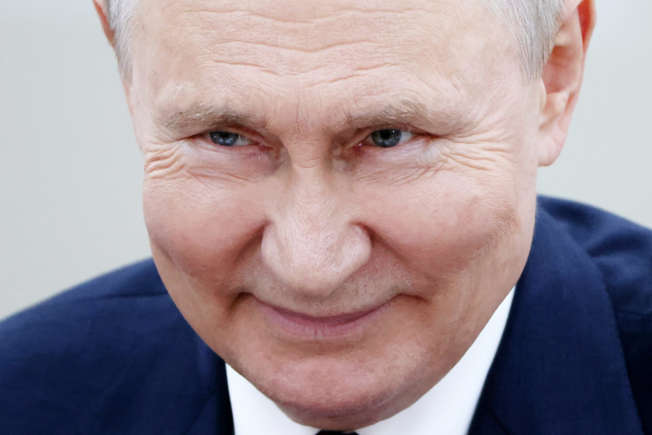
The evolution of the conflict between Russia and Ukraine has brought back the fear of nuclear war and with just cause. Despite the signing of the Non-Proliferation Treaty, the world is still far from a situation of total disarmament.

Many countries have a considerable number of nuclear weapons in their arsenals. In recent years, world peace has been guaranteed by the simple fact that none of them have been used.
This simulation reveals how a US-Russia nuclear war would play out Story by Zeleb.es
This simulation reveals how a US-Russia nuclear war would play out (msn.com)
 The Daily Digest
The Daily DigestThis simulation reveals how a US-Russia nuclear war would play out Story by Zeleb.es
This warning brought back old fears about atomic warfare: What cities would be attacked in such a conflict? How many victims? What would a nuclear war look like?
This simulation reveals how a US-Russia nuclear war would play out (msn.com)
The scenario would involve many countries in the conflict, mainly those where NATO has military bases
According to the Princeton simulation, Russia would attack first with approximately 300 nuclear warheads and short-range missiles, striking NATO bases and troops. NATO would respond with around 180 warheads carried by aircraft over Russian objectives. Casualties? 2.6 million in the span of three hours.
Image: Screencap from the Princeton University simulation.
With Europe in ruins, NATO launches 600 warheads from US soil and submarine-based missiles aimed at Russian nuclear forces. Russia counterattacks with missiles launched from silos, submarines, and road-mobile vehicles. This conflict continuation would last only 45 minutes and have a toll of up to 3.4 million victims.
Image: Screencap from the Princeton University simulation.
NATO and Russia, following the scenario elaborated by Princeton University, would launch attacks on important economic and population centers to hamper the other side's recovery. Five to ten nuclear warheads would be used for each city. Thermonuclear warfare would kill 85.3 million people in 45 minutes.
Image: Screencap from the Princeton University simulation.
The study estimates that, in total, a nuclear war would immediately affect 91.5 million people, which would cause 34.1 million deaths and 57.4 million wounded within the first four or five hours.
The landscape after the conflict would be something like that: Hiroshima in 1945, when an atomic bomb dropped by the United States leveled an entire city. Over 800,000 people died and some 70,000 were wounded. Those affected by radiation would raise the death toll over the following years.
The Princeton University simulation started off from the idea that, in a conflict between Russia and the United States, Moscow would strike with nuclear weapons first.
If the United States is the first to start a nuclear strike, the result would be more or less the same. The scenario presented is based on how the NATO defensive strategy is thought out in case of Russian aggression.
There really isn't much that can be done during a nuclear war: Everything is programmed and there's virtually no time to stop Armageddon.
The fragile principle that held together peace during the Cold War between the United States and Russia was Mutual Assured Destruction, also known as MAD. The idea was that no side would dare to push the button since nobody would win.
The phrase is attributed to nuclear scientist John von Neumann, seeing here receiving the Freedom Medal from President Eisenhower in 1956. The German-born scientist translated the idea into mathematic terms as 1 + 1 = 0.
Film buffs might remember The Doomsday Machine from 'Dr. Strangelove', a Soviet supercomputer that would automatically start a nuclear strike in case the US started a nuclear war. A 2009 piece by NPR reveals that such a system was real and that it was still functioning.
A relatively more recent example was the 1983 John Badham movie 'WarGames'. The premise rests on the tension on how to stop a military supercomputer once it has started to run its attack protocol.
'WarGames' spoilers ahead: The supercomputer programmed to start the nuclear war plays tic-tac-toe against itself and figures out that nobody can win a game like that.
However, life isn't a Hollywood movie, especially when it comes to war. When a conflict begins, it's hard to say how it will end. Just look at recent cases in Iraq or Afghanistan.
The threat of the nuclear apocalypse loomed over the 1980s. Is the world regressing to this scenario? Will humanity go from a global pandemic to a new world war?
24 June 2023 Russia-Ukraine war
Ukraine conflict: Who's in Putin's inner circle and running the war? - BBC News
Ukraine conflict: Who's in Putin's inner circle and running the war? - BBC News
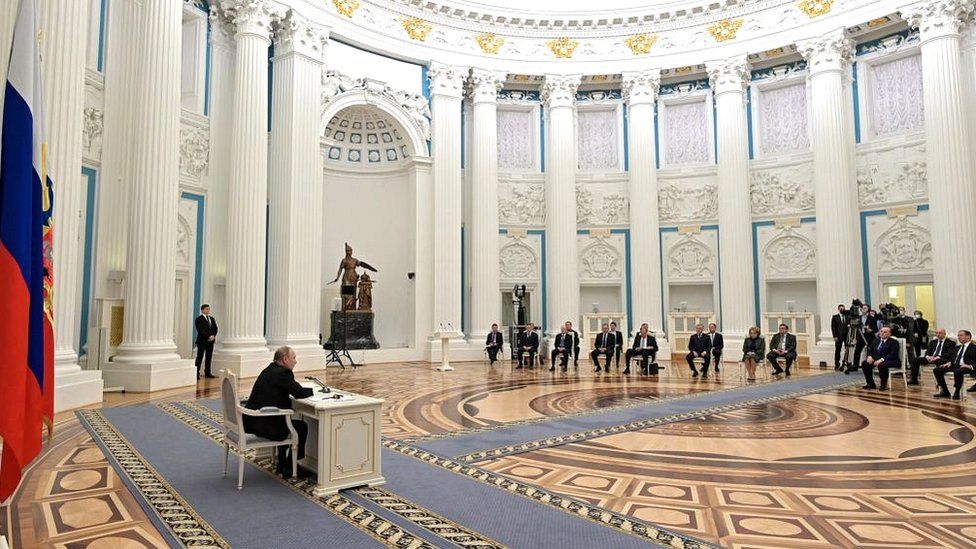
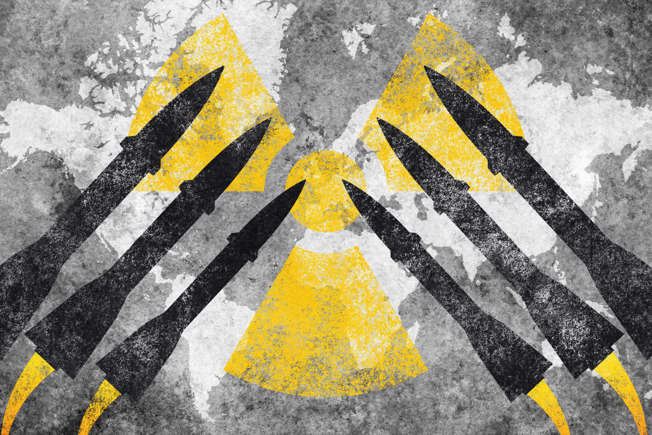
According to data from the Federation of American Scientists, in 2022, there are about 12,700 nuclear warheads worldwide.
"Not a single day has passed where some deputy minister or some deputy governor [has not been] raided or arrested or so on. They're under 24/7 FSB security service surveillance, all of them, if they make one wrong move it's immediately reported and they could face, basically, jail time."
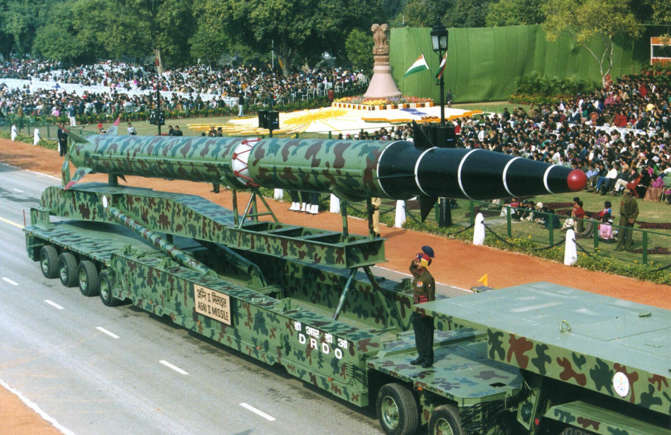
Nine nations own these weapons: Russia, United States, France, United Kingdom, Israel, Pakistan, India, China, and North Korea.
Weapons of mass destruction you won't believe are being created
Weapons of mass destruction (WMD) have been developed, produced, and used on some occasions. The nuclear bomb was a game changer when it came to the amount of damage a WMD could inflict, but technology has evolved, and so have WMDs. Cyber warfare is nothing new, nor is the use of biological weapons, but these are much more sophisticated now. Plus, we have a few new weapons, both hypothetical and real ones, that are worth mentioning.
When it comes to the development of such weapons, countries with enormous military budgets like the US and Israel are at the forefront. The war between Israel and Palestine that broke out in October 2023 has sadly seen some of their advanced technology put to use. As Israel prepares for a ground invasion of Gaza, they are formulating a plan to take over the underground tunnels that have been built under the tiny enclave. As they enter the tunnels, they are reportedly going to employ "sponge bombs" to block off passageways from which they might be ambushed. These bombs don't actually explode, but instead combine two chemical compounds which creates a burst of foam. The foam quickly expands and hardens, sealing off tunnels and exits.
While the tunnels are used by Hamas and other Palestinian armed groups, they are also essential lifelines being used to smuggle essential supplies to the civilians trapped inside Gaza. The enclave has been blockaded on all sides, with no access to food, water, electricity, or medical supplies. Israel has yet to commence its ground operation but has dropped an estimated 6,000 bombs per day on Gaza since the outbreak of the conflict.
In this gallery, we look at what you need to know about the future of weapons of mass destruction. Click on to learn more.

What Putin Fears Most | Journal of Democracy
https://www.
Russian president Vladimir Putin wants you to believe that NATO is responsible for his February 24 invasion of Ukraine—that rounds of NATO enlargement made Russia insecure, forcing Putin to lash out. This argument has two key flaws. First, NATO has been a variable and not a constant source of tension between Russia and the West. Moscow has in the past acknowledged Ukraine’s right to join NATO; the Kremlin’s complaints about the alliance spike in a clear pattern after democratic breakthroughs in the post-Soviet space. This highlights a second flaw: Since Putin fears democracy and the threat that it poses to his regime, and not expanded NATO membership, taking the latter off the table will not quell his insecurity. His declared goal of the invasion, the “denazification” of Ukraine, is a code for his real aim: antidemocratic regime change.
Russia’s brutal invasion of Ukraine has ignited the largest war in Europe since the Second World War, indiscriminately spilling the blood of thousands of Ukrainian soldiers and innocent civilians. Russian president Vladimir Putin wants you to believe that NATO is to blame. He has frequently claimed that NATO expansion—not the 200,000 Russian soldiers and sailors attacking Ukraine’s ports, airfields, roads, railways, and cities—is the central driver of this crisis. Following John Mearsheimer’s provocative 2014 Foreign Affairs article arguing that “the Ukraine crisis is the West’s fault,” the narrative of Russian backlash against NATO expansion has become a dominant framework for explaining—if not justifying—Moscow’s ongoing war against Ukraine.1 This notion has been repeated not only in Moscow but in the United States, Europe, and elsewhere by politicians, analysts, and writers. Multiple rounds of enlargement, they argue, exacerbated Russia’s sense of insecurity as NATO forces crept closer to Russia’s borders, finally provoking Putin to lash out violently, first by invading Georgia in 2008, then Ukraine in 2014, and now a second, likely far larger, invasion of Ukraine today. By this telling, the specter of Ukraine’s NATO membership points both to the cause of the conflict and its solution: Take membership off the table for Ukraine, so the argument goes, and future wars will be prevented.
This argument has two flaws, one about history and one about Putin’s thinking. First, NATO expansion has not been a constant source of tension between Russia and the West, but a variable. Over the last thirty years, the salience of the issue has risen and fallen not primarily due to waves of NATO expansion, but instead as a result of waves of democratic expansion in Eurasia. In a very clear pattern, Moscow’s complaints about the alliance spike after democratic breakthroughs. While the tragic invasions and occupations of Georgia and Ukraine have secured Putin a de facto veto over their NATO aspirations, since the alliance would never admit a country under partial occupation by Russian forces, this fact undermines Putin’s claim that the current invasion is aimed at NATO membership. He has already blocked NATO expansion for all intents and purposes, thereby revealing that he wants something far more significant in Ukraine today: the end of democracy and the return of subjugation. On February 24, in an hour-long, meandering rant explaining his decision to invade, he said so directly.
This reality highlights the second flaw: Because the primary threat to Putin and his autocratic regime is democracy, not NATO, that perceived threat would not magically disappear with a moratorium on NATO expansion. Putin would not stop seeking to undermine democracy and sovereignty in Ukraine, Georgia, or the region as a whole if NATO stopped expanding. As long as citizens in free countries exercise their democratic rights to elect their own leaders and set their own course in domestic and foreign politics, Putin will continue to try to undermine them. Putin’s declared goal of “denazification” in Ukraine is a code word for regime change—antidemocratic regime change.
How We Got Here
To be sure, NATO and its expansion have always been sources of tension in U.S.-Soviet and U.S.-Russian relations. Two decades ago, one of us coauthored (with James Goldgeier) a book on U.S-Russia relations, Power and Purpose, that includes a chapter called “NATO Is a Four-Letter Word.”2 To varying degrees, Kremlin leaders Mikhail Gorbachev, Boris Yeltsin, Putin, and Dmitri Medvedev have expressed concerns about the expansion of the alliance.
Since its founding in 1949, NATO has kept its door open to new members who meet the criteria for admission. After the collapse of the USSR in 1991, no one should be surprised that countries formerly annexed, subjugated, and invaded by the Soviet Union might seek closer security ties to the West. The United States and other NATO allies have worked hard not to deny the aspirations of those newly free societies while also partnering with Russia on European and other security issues. They have sometimes had success and sometimes not.
Many of those who blame the current Ukraine conflict on NATO overlook the fact that in the thirty years since the end of the Cold War, Moscow’s rejection of NATO expansion has veered in different directions at different times.
When President Boris Yeltsin agreed to sign the Russia-NATO Founding Act in 1997, Russia and the alliance codified into this agreement a comprehensive agenda of cooperation. At the signing ceremony Yeltsin declared,
What is also very important is that we are creating the mechanisms for consultations and cooperation between Russia and the Alliance. And this will enable us—on a fair, egalitarian basis—to discuss, and when need be, pass joint decisions on major issues relating to security and stabilities, those issues and those areas which touch upon our interests.3
In 2000 while visiting London, Putin, then serving as acting Russian president, even suggested that Russia could join NATO someday:
Why not? Why not . . . I do not rule out such a possibility . . . in the case that Russia’s interests will be reckoned with, if it will be an equal partner. Russia is a part of European culture, and I do not consider my own country in isolation from Europe . . . Therefore, it is with difficulty that I imagine NATO as an enemy.4
Why would Putin want to join an alliance allegedly threatening Russia?
After the 9/11 terrorist attacks, U.S. president George W. Bush and Putin forged a close, cooperative relationship to fight a common enemy: terrorism. At the time, Putin was focused on cooperation with NATO, not confrontation. The only time the alliance has ever invoked Article 5 on collective defense was to support a NATO intervention in Afghanistan, an action that Putin supported at the UN Security Council. He then followed up this diplomatic support with concrete military assistance for the alliance, including helping the United States to establish military bases in Uzbekistan and Kyrgyzstan. If NATO was always a threat to Russia and its “sphere of influence,” why did Putin facilitate the opening of these bases in the former Soviet Union?
During his November 2001 visit to the United States, Putin struck a realistic but cooperative tone:
We differ in the ways and means we perceive that are suitable for reaching the same objective . . . [But] one can rest assured that whatever final solution is found, it will not threaten . . . the interests of both our countries and of the world.5
In an interview that month, Putin declared,
Russia acknowledges the role of NATO in the world of today, Russia is prepared to expand its cooperation with this organization. And if we change the quality of the relationship, if we change the format of the relationship between Russia and NATO, then I think NATO enlargement will cease to be an issue—will no longer be a relevant issue.6
When NATO announced in 2002 its plan for a major (and last big) wave of expansion that would include three former Soviet republics—Estonia, Latvia, and Lithuania—Putin barely reacted. He certainly did not threaten to invade any of the countries to keep them out of NATO. Asked specifically in late 2001 whether he opposed the Baltic states’ membership in NATO, he stated, “We of course are not in a position to tell people what to do. We cannot forbid people to make certain choices if they want to increase the security of their nations in a particular way.”7
Putin even maintained the same attitude when it was a question of Ukraine someday entering the Atlantic Alliance. In May 2002, when asked for his views on the future of Ukraine’s relations with NATO, Putin dispassionately replied,
I am absolutely convinced that Ukraine will not shy away from the processes of expanding interaction with NATO and the Western allies as a whole. Ukraine has its own relations with NATO; there is the Ukraine-NATO Council. At the end of the day, the decision is to be taken by NATO and Ukraine. It is a matter for those two partners.8
A decade later, under President Medvedev, Russia and NATO were cooperating once again. At the 2010 NATO summit in Lisbon, Medvedev declared,
The period of distance in our relations and claims against each other is over now. We view the future with optimism and will work on developing relations between Russia and NATO in all areas . . . [as they progress toward] a full-fledged partnership.9
At that summit, he even floated the possibility of Russia-NATO cooperation on missile defense. Complaints about NATO expansion never arose.
From the end of the Cold War until Putin’s invasion of Ukraine in 2014, NATO in Europe was drawing down resources and forces, not building them up. Even while expanding membership, NATO’s military capacity in Europe was much greater in the 1990s than in the 2000s. During this same period, Putin was spending significant resources to modernize and expand Russia’s conventional forces deployed in Europe. The balance of power between NATO and Russia was shifting in favor of Moscow.
These episodes of substantive Russia-NATO cooperation undermine the argument that NATO expansion has always and continuously been the driver of Russia’s confrontation with the West during the last three decades. The historical record simply does not support the thesis that an expanding NATO bears sole blame for Russian antagonism with the West and Moscow’s aggression against Ukraine since 2014. Rather, we must look elsewhere to understand the genuine source of Putin’s hostility to Ukraine and its Western partners.
The more serious cause of tensions has been a series of democratic breakthroughs and popular protests for freedom in postcommunist countries throughout the 2000s, which many, including Putin, refer to as the “color revolutions.”10 Putin believes that Russian national interests have been threatened by what he portrays as U.S.-supported coups. After each of them—Serbia in 2000, Georgia in 2003, Ukraine in 2004, the Arab Spring in 2011, Russia in 2011–12, and Ukraine in 2013–14—Putin has pivoted to more hostile policies toward the United States, and then invoked the NATO threat as justification for doing so.
Boris Yeltsin never supported NATO expansion but acquiesced to the first round of expansion in 1997 because he believed that his close ties to President Bill Clinton and the United States were not worth sacrificing over this comparatively smaller matter. Through NATO’s Partnership for Peace program and especially the NATO-Russia Founding Act, Clinton and his team made a considerable effort to keep U.S.-Russian relations positive while at the same time managing NATO expansion. The 1999 NATO bombing of Serbia to stop ethnic cleansing in Kosovo severely tested that strategy but survived in part because Clinton gave Yeltsin and Russia a role in the negotiated solution. When the first postcommunist color revolution overthrew Slobodan Miloševiæ a year later, Russia’s new president, Putin, deplored the act but did not overreact. At that time, he still entertained the possibility of cooperation with the West, including NATO.
Yet the next round of democratic expansion in the post-Soviet world, the 2003 Rose Revolution in Georgia, escalated U.S.-Russian tensions significantly. Putin blamed the United States directly for assisting this democratic breakthrough and helping to install someone whom he saw as a pro-American puppet, President Mikheil Saakashvili. Immediately after the Rose Revolution, Putin sought to undermine Georgian democracy, ultimately invading in August 2008 and recognizing two Georgian regions—Abkhazia and South Ossetia—as independent states. U.S.-Russian relations reached a new post-Soviet low in 2008.
A year after the Rose Revolution, the most consequential democratic expansion in the post-Soviet world, the Orange Revolution, erupted in Ukraine in 2004.11 In the years prior to that democratic breakthrough, Ukraine’s foreign-policy orientation under President Leonid Kuchma was relatively balanced between east and west, but with gradually improving ties between Kyiv and Moscow. That changed when a falsified presidential election in late 2004 brought hundreds of thousands of Ukrainians into the streets, eventually sweeping away Kuchma’s—and Putin’s—handpicked successor, Viktor Yanukovych.12 Instead, the prodemocratic and pro-Western Orange Coalition led by President Viktor Yushchenko and Prime Minister Yuliya Tymoshenko took power.
Compared to Serbia in 2000 or Georgia in 2003, Ukraine’s Orange Revolution was a much larger threat to Putin. First, the Orange Revolution occurred suddenly and in a much bigger and more strategic country on Russia’s border. The abrupt pivot to the West by Yushchenko and his allies left Putin facing the prospect that he had “lost” a country on which he placed tremendous symbolic and strategic importance.
To Putin, the Orange Revolution undermined a core objective of his grand strategy: to establish a privileged and exclusive sphere of influence across the territory that once comprised the Soviet Union.13 Putin believes in spheres of influence—that as a great power, Russia has a right to veto the sovereign political decisions of its neighbors. Putin also demands exclusivity in his neighborhood: Russia can be the only great power to exercise such privilege (or even to develop close ties) with these countries. This position has hardened significantly since Putin’s conciliatory stance of 2002 as Russia’s influence in Ukraine has waned and Ukraine’s citizens have repeatedly signaled their desire to escape Moscow’s grasp. Subservience is now required. As Putin explained in a recent article, in his view Ukrainians and Russians are “one people” whom he is seeking to reunite, even if through coercion.14 For Putin, therefore, the 2004 “loss” of Ukraine to the West marked a major negative turning point in U.S.-Russian relations that was far more salient than the second wave of NATO expansion that was completed the same year.
Second, those Ukrainians who rose up in defense of their freedom were, in Putin’s own assessment, Slavic brethren with close historical, religious, and cultural ties to Russia. If it could happen in Kyiv, why not in Moscow? Several years later, it almost did occur in Russia when a series of mass protests erupted in Moscow, St. Petersburg, and other cities in the wake of fraudulent parliamentary elections in December 2011.15 They were the largest protests in Russia since 1991, the year the Soviet Union collapsed. For the first time in Putin’s decade-plus in power, ordinary Russians showed themselves to have both the will and the capability to threaten his grip on power.16 That popular uprising in Russia occurred the same year as the Arab Spring and was followed by Putin’s return to the Kremlin as president for a third term in 2012. The combination of these mass protests and Putin’s reelection as president caused another major negative turn in U.S.-Russian relations and ended the “reset” launched by Presidents Barack Obama and Dmitri Medvedev in 2009.17 Democratic mobilization, first in the Middle East and then across Russia—not NATO expansion—ended this last chapter of U.S.-Russian cooperation. There have been no new chapters of cooperation since.
U.S.-Russian relations deteriorated even further in 2014, again because of new democratic expansion, not NATO expansion. The next democratic mobilization to threaten Putin happened again in Ukraine in 2013–14. After the Orange Revolution in 2004, Putin did not invade Ukraine, but wielded other instruments of influence to help his protégé, Viktor Yanukovych, narrowly win the Ukrainian presidency six years later. Yanukovych, however, turned out not to be a loyal Kremlin servant, but tried to cultivate ties with both Russia and the West. Putin finally compelled Yanukovych to make a choice, and the Ukrainian president chose Russia in November 2013 when he reneged on signing an EU association agreement in favor of pursing membership in Russia’s Eurasian Economic Union.
To the surprise of everyone in Moscow, Kyiv, Brussels, and Washington, Yanukovych’s decision to scuttle this agreement with the EU triggered mass demonstrations in Ukraine again, with hundreds of thousands of Ukrainians pouring into the streets in what would become known as the EuroMaidan or “Revolution of Dignity” to protest Yanukovych’s turn away from the democratic West. The street protests lasted several weeks, punctuated tragically by the killing of dozens of peaceful protestors by Yanukovych’s government, the eventual collapse of that government and Yanukovych’s flight to Russia in February 2014, and a new pro-Western government taking power in Kyiv. Putin had “lost” Ukraine for the second time in a decade, again because of democratic regime change.
But this time, Putin struck back with military force to punish the alleged U.S.-backed, neo-Nazi usurpers in Kyiv. Russian armed forces seized Crimea; Moscow later annexed the Ukrainian peninsula. Putin also provided money, equipment, and soldiers to back separatists in eastern Ukraine, fueling a simmering eight-year war in Donbas that claimed the lives of approximately fourteen-thousand people. After invading—not before—Putin amped up his criticisms of NATO expansion to justify his belligerent actions.
In response to this second Ukrainian democratic revolution, Putin concluded that cooptation through elections and other nonmilitary means had to be augmented with greater coercive pressure, including military intervention. Since the Revolution of Dignity, Putin has waged an unprecedented assault against Ukraine’s democracy using a full spectrum of military, political, informational, social, and economic weapons in an attempt to destabilize and eventually topple Ukraine’s democratically elected government.18 Ukraine’s relationship with NATO and the United States was just a symptom of what Putin believes is the underlying disease: a sovereign, democratic Ukraine.
Putin’s Real Casus Belli: Ukrainian Democracy
Amazingly, eight years of unrelenting Russian pressure did not break Ukraine’s democracy. Just the opposite. After Putin’s annexation and ongoing support for the war in Donbas, Ukrainians are now more united across ethnic, linguistic, and regional divides than at any other point in Ukrainian history. In 2019, Volodymyr Zelensky won the Ukrainian presidency in a landslide election, winning popular support in every region of the country. Not surprisingly, Putin’s war in eastern Ukraine also has fueled greater enthusiasm for joining NATO among Ukrainians.
In February 2022, Putin embarked on a new strategy for ending Ukrainian democracy: massive military intervention. Putin claims that his purpose is to stop NATO expansion. But that is a fiction. Nothing in Ukraine-NATO relations has changed in the past year. It is true that Ukraine aspires to join NATO someday. (The goal is even embedded in the Ukrainian constitution.) But while NATO leaders have remained committed to the principle of an open-door policy, they also clearly stated prior to the war that Ukraine was not yet qualified to join. Putin’s casus belli is his own invention.
On the eve of his invasion, Putin’s strategy to undermine Ukrainian democracy looked as if it might succeed without military force. The very threat of war did significant damage to the Ukrainian economy and fueled new divisions among Ukraine’s political parties over how Zelensky handled the leadup to the crisis. Some argued that Zelensky should have created a new grand coalition or unity government; others lamented his alleged inadequate preparations for war. And some claimed that Zelensky showed his diplomatic inexperience by arguing with U.S. president Joe Biden about the probability of a Russian invasion at a time when unity with the West was most needed.
But an impatient and angry Putin could not wait anymore. He attacked with the full might of the Russian armed forces. As this essay goes to print, the war is still raging.
Putin’s strategy has backfired thus far. Contrary to his expectations, Putin’s use of force has strengthened Ukrainian democracy, not weakened it. His decision to invade Ukraine has united Ukrainians and strengthened Zelensky’s popularity and image as a leader of the nation. While Putin has remained isolated from his subjects and even his own courtiers while his bombs wreak devastation in a far-off land, the charismatic Zelensky has vowed to stay in Kyiv with his soldiers and fight for Ukraine’s democratic future, rallying public opinion in Ukraine and around the world. Putin may still believe that there is no such thing as a Ukrainian nation, as he has claimed on multiple occasions. But just as warfare has forged national identities for centuries, Russia’s aggression has galvanized a Ukrainian people who will forevermore turn their backs on Muscovy’s autocracy, choosing instead to embrace the universal value of freedom—freedom from Russian domination, freedom to choose their own destiny, freedom to live in peace.
But despite early Ukrainian successes on the battlefield, the long-term survival of Ukraine’s democracy hangs in the balance. Putin’s continued bellicose rhetoric and rejection of any serious attempts to negotiate a ceasefire suggest that Moscow’s assault will continue unabated. Russia’s initial military operations suggest that Putin envisioned a blitzkrieg invasion from multiple fronts that would face little resistance and rapidly encircle Kyiv, resulting in Zelensky’s forcible removal from power. New elections held at gunpoint would then deliver Putin his desired puppet government, just as they did in post–World War II Eastern Europe in the shadow of Soviet tanks. In one Ukrainian city, Melitopol, in a facsimile of Stalin’s methods in Eastern Europe after 1945, Russia’s occupying forces have already removed the mayor and installed a Moscow puppet. At the time of this writing, however, Russia’s military has been bogged down by fierce Ukrainian resistance and is now settling in for the unpleasant prospect of a long, bloody slog across miles of inhospitable Ukrainian territory. Russia’s armies will be treated by Ukrainians as the occupiers of 1941, not the liberators of 1945. It is too early to predict the outcome of this gruesome war. But despite the Russian army’s poor performance so far, there is no evidence to suggest that Putin has abandoned his objective to remove Zelensky from power and subjugate Ukraine to Moscow’s control.
Putin may dislike NATO expansion, but he is not genuinely frightened by it. Russia has the largest army in Europe, engorged by two decades of lavish spending. NATO is a defensive alliance. It has never attacked the Soviet Union or Russia, and it never will. Putin knows that. But Putin is threatened by a flourishing democracy in Ukraine. He cannot tolerate a successful and democratic Ukraine on Russia’s border, especially if the Ukrainian people also begin to prosper economically. That would undermine the Kremlin’s own regime stability and proposed rationale for autocratic state leadership. Just as Putin cannot allow the will of the Russian people to guide Russia’s future, he cannot allow the people of Ukraine, who have a shared culture and history, to realize the prosperous, independent, and free future that they have voted and fought for.
Although the chance of a stable ceasefire seems remote today, unprecedented sanctions and growing public dissent within Russia could, in theory, force Putin to the negotiating table. The fog of war is dense. But regardless of where the Russian invaders are stopped—be it Luhansk and Donetsk or Kharkiv, Mariupol, Kherson, Odesa, Kyiv, or Lviv—the Kremlin will remain committed to undermining Ukrainian (and Georgian, Moldovan, Armenian, and the list goes on) democracy and sovereignty for as long as Putin remains in power and maybe longer if Russian autocracy continues. And the Ukrainian people have already proved their mettle: They will fight for their democracy until the day Russian forces leave Ukraine.
NOTES
1. John J. Mearsheimer, “Why the Ukraine Crisis Is the West’s Fault: The Liberal Delusions That Provoked Putin,” Foreign Affairs 93 (September–October 2014): 77.
2. James M. Goldgeier and Michael McFaul, Power and Purpose: U.S. Policy Toward Russia After the Cold War (Washington D.C.: Brookings Institution Press, 2003).
3. White House Office of the Press Secretary, “NATO-Russia Founding Act Signing,” 27 May 1997, https://
4. David Hoffman, “Putin Says ‘Why Not?’ to Russia Joining NATO,” Washington Post,6 March 2000, www.washingtonpost.com/
5. Bob Kemper, “Bush, Putin Downplay Differences,” Chicago Tribune, 16 November 2001, www.chicagotribune.com/
6. “Transcript of Robert Siegel Interview with Vladimir Putin,” NPR, 15 November 2001, https://legacy.npr.org/
7. “Transcript of Robert Siegel Interview with Vladimir Putin.”
8. “Press Statement and Answers to Questions at a Joint News Conference with Ukrainian President Leonid Kuchma,” President of Russia, 17 May 2002, http://en.kremlin.ru/
9. “News Conference Following NATO-Russia Council Meeting,” President of Russia, 20 November 2010, http://en.kremlin.ru/
10. Michael McFaul, “Transitions from Postcommunism,” Journal of Democracy 16 (July 2005): 5–19.
11. Anders Åslund and Michael McFaul, Revolution in Orange: The Origins of Ukraine’s Democratic Breakthrough (Washington, D.C.: Carnegie Endowment for International Peace, 2006).
12. McFaul, “Transitions from Postcommunism,” 5.
13. Robert Person, “Four Myths About Russian Grand Strategy,” Center for Strategic and International Studies, 22 September 2020, https://www.csis.org/
14. Vladimir Putin, “On the Historical Unity of Russians and Ukrainians,” President of Russia, 12 July 2021, http://en.kremlin.ru/
15. Denis Volkov, “Putinism Under Siege: The Protesters and the Public,” Journal of Democracy 23 (July 2012): 55–62.
16. Robert Person, “Balance of Threat: The Domestic Insecurity of Vladimir Putin,” Journal of Eurasian Studies 8, no. 1 (2017): 44–59.
17. Michael McFaul, From Cold War to Hot Peace: An American Ambassador in Putin’s Russia (New York: Houghton Mifflin Harcourt, 2018).
18. Taras Kuzio, Putin’s War Against Ukraine: Revolution, Nationalism, and Crime (CreateSpace Independent Publishing Platform, 2017).
The views expressed in this essay are the authors’ own and do not reflect the official position of the U.S. Army, Department of Defense, or U.S. Government.
About the Authors
Robert Person
Robert Person is associate professor of international relations at the U.S. Military Academy, director of its international affairs curriculum, and faculty affiliate at its Modern War Institute. His next book, Russia’s Grand Strategy in the 21st Century, is forthcoming. His Twitter is @RTPerson3.
View all work by Robert Person
Michael McFaul
Michael McFaul, former U.S. ambassador to Russia, is professor of political science at Stanford University, director of the Freeman Spogli Institute for International Studies, and Peter and Helen Bing Senior Fellow at the Hoover Institution. His most recent book is From Cold War to Hot Peace: An American Ambassador in Putin’s Russia (2018).
View all work by Michael McFaul
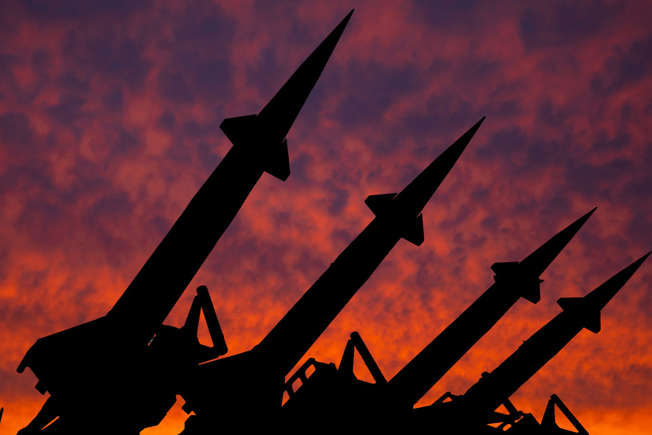
Photo: Federation of American Scientists
Putin misled by 'yes men' in military afraid to tell him the truth, White House and EU officials say | Reuters
March 31, 20228
WASHINGTON, March 30 (Reuters) - Russian President Vladimir Putin was misled by advisers who were too scared to tell him how poorly the war in Ukraine is going and how damaging Western sanctions have been, White House and European officials said on Wednesday.
Russia's Feb. 24 invasion of its southern neighbor has been halted on many fronts by stiff resistance from Ukrainian forces who have recaptured territory even as civilians are trapped in besieged cities.
“We have information that Putin felt misled by the Russian military, which has resulted in persistent tension between Putin and his military leadership,” Kate Bedingfield, White House communications director, told reporters during a press briefing.
“We believe that Putin is being misinformed by his advisers about how badly the Russian military is performing and how the Russian economy is being crippled by sanctions because his senior advisors are too afraid to tell him the truth,” she said.
The U.S. was putting forward this information now to show “this has been a strategic error for Russia,” she said.
The Kremlin made no immediate comment about the assertions after the end of the working day in Moscow, and the Russian embassy in Washington did not immediately reply to a request for comment.
Washington's decision to share its intelligence more publicly reflects a strategy it has pursued since before the war began. In this case, it could also complicate Putin's calculations, a second U.S. official said, adding, "It's potentially useful. Does it sow dissension in the ranks? It could make Putin reconsider whom he can trust."
Russian President Vladimir Putin chairs a meeting with members of the Security Council via a video link at the Novo-Ogaryovo state residence outside Moscow, Russia March 24, 2022. Sputnik/Mikhail Klimentyev/Kremlin via REUTERS/File Photo Acquire Licensing Rights
One senior European diplomat said the U.S. assessment was in line with European thinking. "Putin thought things were going better than they were. That's the problem with surrounding yourself with 'yes men' or only sitting with them at the end of a very long table," the diplomat said.
Russian conscripts were told they were taking part in military exercises, but had to sign a document before the invasion that extended their duties, two European diplomats said.
"They were misled, badly trained and then arrived to find old Ukrainian women who looked like their grandmothers yelling at them to go home," one of the diplomats added.
There were no indications at the moment that the situation could foster a revolt among the Russian military, but the situation was "unpredictable" and Western powers "would hope that unhappy people would speak up," the senior European diplomat said.
Military analysts say Russia has reframed its war goals in Ukraine in a way that may make it easier for Putin to claim a face-saving victory despite a woeful campaign in which his army has suffered humiliating setbacks. read more
Russian forces bombarded the outskirts of the capital Kyiv and the besieged city of Chernihiv in northern Ukraine on Wednesday, a day after Russia promised to scale down military operations in both cities in what the West dismissed as a ploy to regroup by invaders suffering heavy losses. read more
Russia says it is carrying out a "special operation" to disarm and "denazify" its neighbor. Western countries say Moscow launched an unprovoked invasion.
Reporting by Steve Holland and Andrea Shalal; Writing by Doina Chiacu; Editing by Chizu Nomiyama and Jonathan Oatis
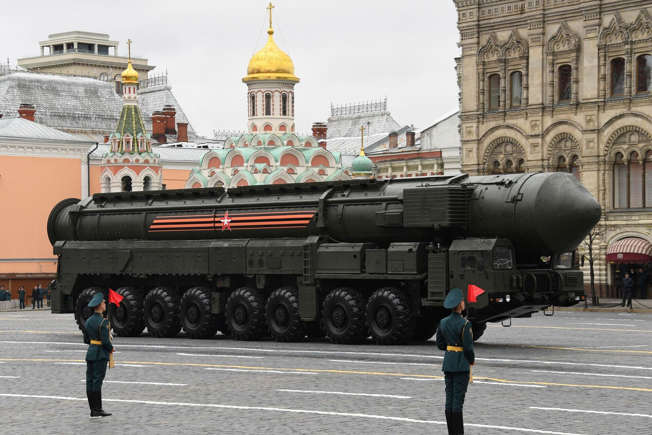
These are huge numbers, especially if we compare the amount of nukes Russia has with those of other NATO countries. Putin, in fact, has more nuclear warheads available to him than all the NATO countries put together.
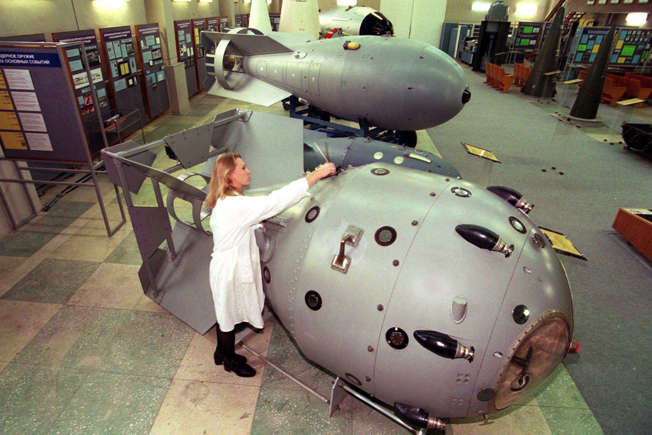
Of the 5,977 Russian nuclear warheads, however, 1,500 are obsolete and ready for decommissioning.
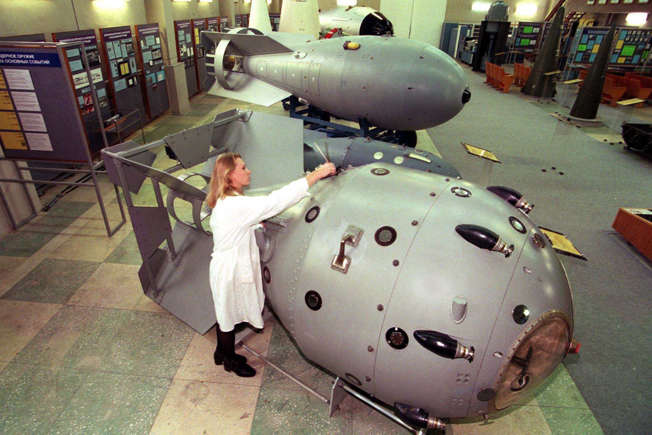
According to the Federation of American Scientists, there are still 1,588 nukes in Russia that are ready to be used on a moments notice - on Vladimir Putin's command.

The United States has a good idea of how many strategic nuclear weapons are in Russia's arsenal because both Washington and Moscow must disclose this information under the terms of New START, the last remaining arms control treaty.
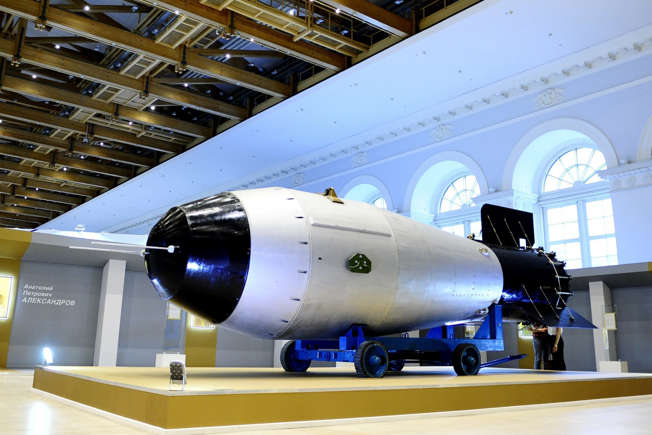
According to the Bulletin of the Atomic Scientists, the Russian arsenal includes a total of 2.565 strategic warheads. Strategic nuclear weapons are the most destructive of the two kinds of nuclear weapons.
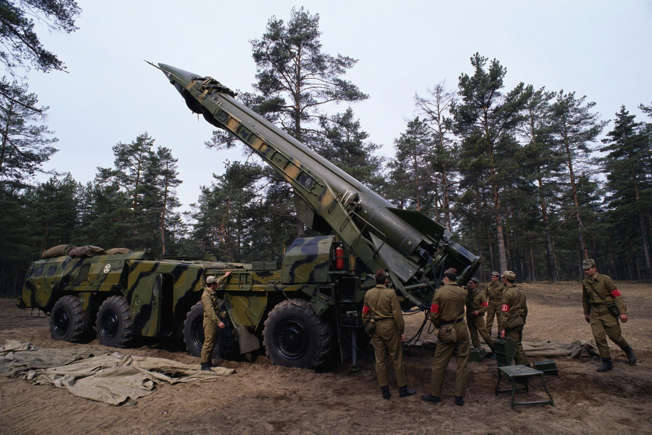
However, Moscow also has a large number of tactical nuclear weapons, with less destructive potential compared to strategic ones (up to 50 kilotons) and with a shorter range.
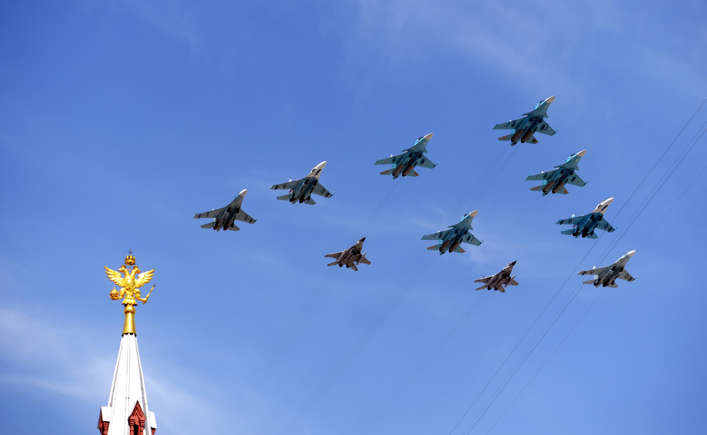
The Bulletin of the Atomic Scientists states that Russia has 1,912 non-strategic warheads which are being held in reserve.

Putin's absurb, angry spectacle will be a turning point in his long reign

Analysis: This was a supreme leader marshalling his minions for a decision that will change the security architecture in Europe and may well lead to horrific war
Sitting alone at a desk in a grand, columned Kremlin room, Vladimir Putin looked across an expanse of parquet floor at his security council and asked if anyone wished to express an alternative opinion.
He was met with silence.
A few hours later, the Russian president appeared on state television to give an angry, rambling lecture about Ukraine, a country that in Putin’s telling had become “a colony with a puppet regime”, and had no historical right to exist.
Putin’s double bill, which was immediately followed by the signing of an agreement on Russian recognition of the two proxy states in east Ukraine as independent entities, is likely to go down in history as one of the major turning points in his 22-years-and-counting rule over Russia.
This was not a politician convening his team for discussions, this was a supreme leader marshalling his minions and ensuring collective responsibility for a decision that, at minimum, will change the security architecture in Europe, and may well lead to a horrific war that consumes Ukraine.
Putin appeared genuinely angry and passionate in his speech, which he almost certainly wrote himself.
Belarus should face same sanctions as Russia in event of invasion, says EUIn a symbolic sign of his increasing isolation, with no equals who can talk back to him or debate ideas, Putin has recently taken to meeting politicians, including his own ministers, across ostentatiously large tables, apparently as a Covid precaution. But at the security council meeting on Monday, when a long table for once would have seemed appropriate, Putin sat alone, surveying his subordinates from absurdly far away, as they squirmed awkwardly in chairs waiting their turn to be grilled by the boss.
From behind his desk, frequently smirking, Putin listened one-by-one to his security council. The body contains some of the few people who have Putin’s ear, but even some of them appeared overawed by the situation and nervous at fluffing their lines.
Sergei Naryshkin, the hawkish head of Russia’s spy service, known for making aggressively anti-western statements, stuttered uncomfortably as Putin grilled him on whether he supported the decision.
“Speak directly!” Putin snapped, twice.
Eventually, when he was able to get the words out, Naryshkin said he supported “the LNR and DNR becoming part of Russia.” Putin told him that wasn’t the subject of the discussion; it was only recognition being weighed up.
'Speak plainly!': Putin has tense exchange with his spy chief – video
Some suggested this might have been a carefully scripted encounter to show the West what other options might be available, but Naryshkin’s genuinely flustered expression suggested otherwise.
It is hard to tell whether or not Putin had decided his plan for Ukraine months ago, or whether he has been making plans on the hop, but it was certainly clear that the decision on recognition had been taken well before this strange, stage-managed event.
There was very little exchange of opinion, and the idea that it was all spontaneous was further undermined by the fact that closeups of the watches of certain participants appeared to suggest that the “live” broadcast had in fact been filmed several hours earlier.
This did not stop Putin specifically emphasising that the event really was a frank exchange of views.
“Every one of you knows, and I specially want to underline it … I did not discuss any of this with you before. I did not ask your opinion before. And this is happening spontaneously, because I wanted to hear your opinions without any preliminary preparation,” he said.
The appearance of Putin just a few hours later with his long, pre-prepared and wide-ranging speech made the claim this was all a real-time decision-making process even more implausible.
Many of Putin’s team give the impression of genuinely believing the propaganda narrative Russia has built to justify its continuing aggression against Ukraine. Valentina Matviyenko, the only woman on the security council, gave an elongated harangue cobbled together from the more outlandish talking points of Russian news bulletins: innocent Russia facing down the nefarious west, which was backing the “genocidal” Kyiv regime.
UK says ‘serious doubts’ exist within Russian military about invading Ukraine
Not everyone was so enthusiastic: the prime minister, Mikhail Mishustin, spoke briefly and drily, looking visibly uncomfortable. Not willing to let him off the hook without swearing fealty to the decision that was already inevitably on the way, Putin asked him directly whether he supported it; Mishustin mumbled that he did. Everyone was now publicly on record as supporting this move; nobody will be able to weasel out of it later and claim they put up a fight.
The recognition decision answers some questions but others remain. There is a chance Putin may simply recognise the two republics “as they are”. This, after months of apocalyptic scenarios, would probably be privately accepted as a good outcome by Ukraine and the west.
But it seems likely that Putin has much more in mind than simply taking a nibble out of Ukraine’s east and taking formal responsibility for territories he already de facto controlled.
Putin’s final words, that if Kyiv did not stop the violence they would bear responsibility for the “ensuing bloodshed”, were ominous in the extreme. It sounded, quite simply, like a declaration of war.

Putin's strength now looks like his main weakness, with people too loyal - or scared - the challenge him
https://www.cnbc.com/2022/03/31/russias-putin-is-so-powerful-everyone-is-scared-to-tell-him-the-truth.htmlnge him
- Declassified U.S. intelligence suggests Russian President Vladimir Putin feels he was misled by military leaders over the dire invasion of Ukraine.
- There are major question marks over whether Putin's inner circle feels able to question his rationale or strategy when it comes to Russia's invasion.
President Vladimir Putin's immense power looks like it might now be a key weakness for the Russian leader, with those around him seemingly too scared to tell him the truth, or to question his rationale or strategy when it comes to Russia's invasion of Ukraine.
"Putin systematically got rid of people who could have challenged him, leaving only the most loyal and fearful ones," Anton Barbashin, a Russian political analyst and editorial director of the journal Riddle, told CNBC on Thursday.
"Any autocrat or dictator, the longer he stays in power, eventually surrounds himself with people that are first loyal, and only then (even if so) are competent," he added.
"We have a fix for it — it is called the separation of power and office term limits, but Putin believed he could work around it. No one can. So we have both the nations of Ukraine, and to a lesser degree Russia, paying for it."
Newly declassified U.S. intelligence released on Wednesday suggested that Putin has not been given the whole truth about Russia's botched invasion of Ukraine and that the president feels misled by his military leaders who did not tell him key details about the war — which has not gone to plan with Russian forces bogged down in fighting in the north, east and south — because they feared angering him.
Barbashin said that while he was cautious about accepting the veracity of the U.S. intelligence update wholesale, it was likely that the information Putin receives — mostly coming from his security agencies or his own presidential administration — is biased and inaccurate.
Such information, Barbashin noted, "can and most likely is always manipulated by people around him.
"No one wants to deliver bad news and every agency that works for him wants to be the one that proves its value before him," he said. "We don't know what exactly is happening there. But clearly, judging by some noise ... Putin is not happy with how war is going."
CNBC has contacted the Kremlin for a response to the intelligence report and is awaiting a response.
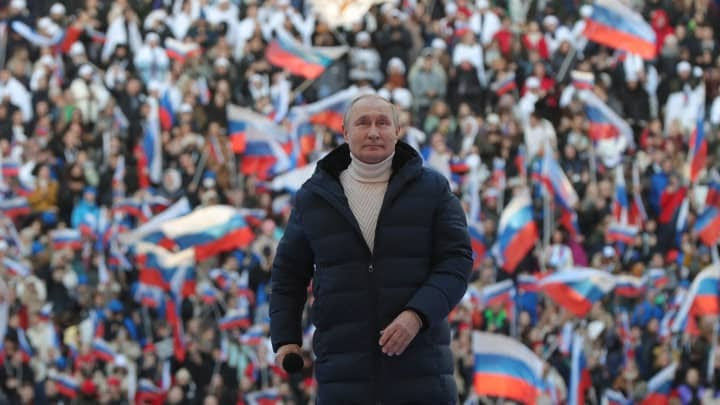
Analysts say it's not just military commanders who are scared of Putin, and that it's a pervasive problem throughout Russian government circles, from the heights of Putin's inner circle to highly qualified civil servants who are scared to question the regime or the war in Ukraine.
"They're very much afraid — very much afraid," Vladimir Milov, a Russian opposition politician and former deputy energy minister, who now lives in Lithuania, told CNBC on Wednesday.
"Believe me, I have a lot of sources in the Russian government and nobody is actually supporting the war — maybe save for a few people in Putin's inner circle — nobody is supporting what Putin is doing."
"I would say that among government circles, support for what Putin is doing is near zero," he added.


When asked why many civil servants don't just quit their posts, Milov said most feel trapped and scared of the consequences.
"They have nowhere else to go. They will not be accepted in the West after essentially assisting Putin to launch the war, so most of them are really trapped and feel like they have no choice but to sit and wait."
Milov added that Russian government personnel have been "persecuted" to a larger extent than even opposition figures lately.
"Not a single day has passed where some deputy minister or some deputy governor [has not been] raided or arrested or so on. They're under 24/7 FSB security service surveillance, all of them, if they make one wrong move it's immediately reported and they could face, basically, jail time."
As the war in Ukraine enters its sixth week on Thursday, there is little sign of the invasion coming to a swift conclusion and every indication it is becoming a war of attrition, with each side trying to wear the other down.
Putin is widely believed to have expected Russian forces to easily occupy the country with the aim of unseating the Ukrainian government and installing a pro-Russian regime as Moscow looks to expand its sphere of influence over former Soviet states.

Defense analysts have said that Russian troops were ill-prepared for the invasion but this may not have been communicated to Putin by military commanders eager to please, and reluctant to look incompetent — or indeed for the forces under their command to look incapable.
"We've seen Russian soldiers — short of weapons and morale — refusing to carry out orders, sabotaging their own equipment and even accidentally shooting down their own aircraft," Jeremy Fleming, the head of the U.K.'s cyber-intelligence agency GCHQ, said in a speech Thursday, stating that Putin "overestimated the abilities of his military to secure a rapid victory."
"And even though we believe Putin's advisors are afraid to tell him the truth, what's going on and the extent of these misjudgments must be crystal clear to the regime," he added.
No speaking truth to power
Experts are asking whether the invasion of Ukraine — which has had unintended consequences for Russia — could backfire spectacularly on Putin, leaving him vulnerable to an uprising at home, as living standards fall, or a coup led from within by members of his political and business elite.
Analysts note that there appears to be very little pressure on Putin to bring the war to an end, with little evidence that any members of Russia's political or business elite were mobilizing against the Ukraine war.
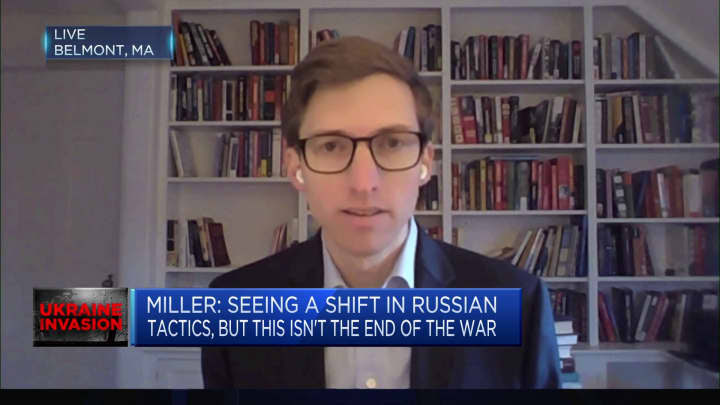
"Certainly Russia has suffered higher casualties than it expected ... and certainly sanctions are more significant than Russia was counting on, but at the end of the day the Kremlin is insulated from much domestic political pressure," Christopher Miller, assistant professor of international history at the Fletcher School of Law and Diplomacy at Tufts University, told CNBC on Wednesday.
Whether these misjudgments have made him more vulnerable to a potential overthrow or coup is uncertain, however.
Putin is widely seen to have derived his power from protecting and enriching a business elite, as well as persecuting Russia's political opposition, among whom the most prominent figure is Alexei Navalny who was imprisoned on what are widely seen as trumped-up charges.
Putin is also said to be surrounded by "siloviki," or "strongmen," who were former colleagues of his in the KGB (the predecessor of the FSB, Russia's security service) or who come from the military and security services such as the GRU (the foreign military intelligence agency) or the FSO — the Federal Protective Service, a federal government agency believed to have around 50,000 personnel who are responsible for protecting high-ranking state officials, of course including the president.
As such, Putin is seen as having a cocoon of protection around him, making him virtually untouchable.
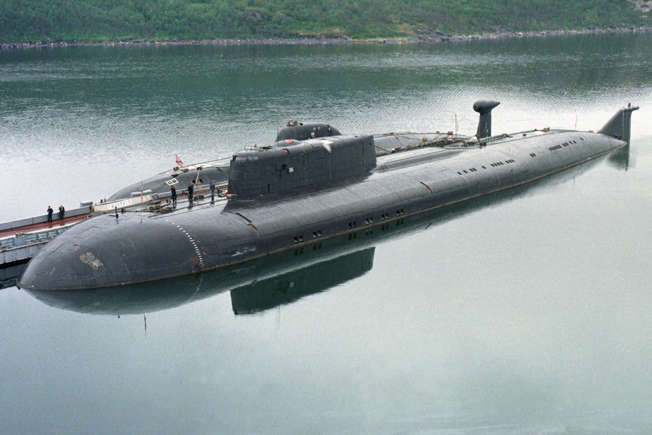
Since the war started in Ukraine in February, there has been talk of the "nuclear triad" in the media. According to Britannica Academic, "both the United States and Russia have had the strongest and longest-living triads."
A nuclear triad is a military structure that includes land-launched atomic missiles, submarines armed with nukes, and aircraft armed with nuclear missiles and bombs. This approach helps to ensure the opponent cannot easily destroy all of a nation's nuclear weapons in one attack.

Recently, as part of the analysis of the possible sabotage of the Nord Stream, one of Russia's submarines with nuclear weapons was mentioned: the K-329 Belgorod. (Pictured here at the top.)

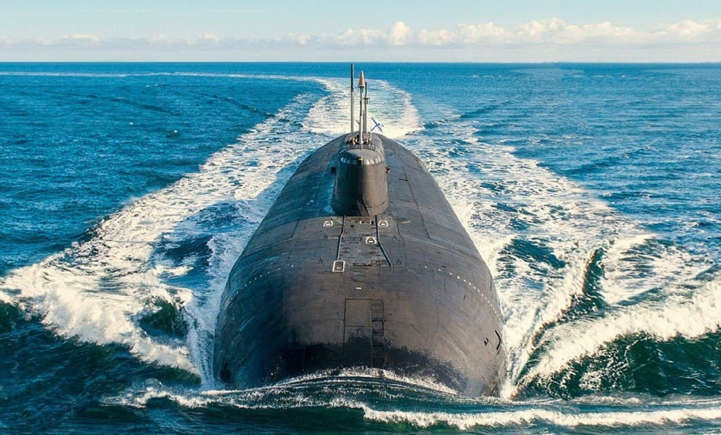
Combined with the anechoic coverings with which the K-329 Belgorod is equipped, which allows it to create an acoustic screen, making it difficult to detect, the Belgorod is one terrifying weapon.
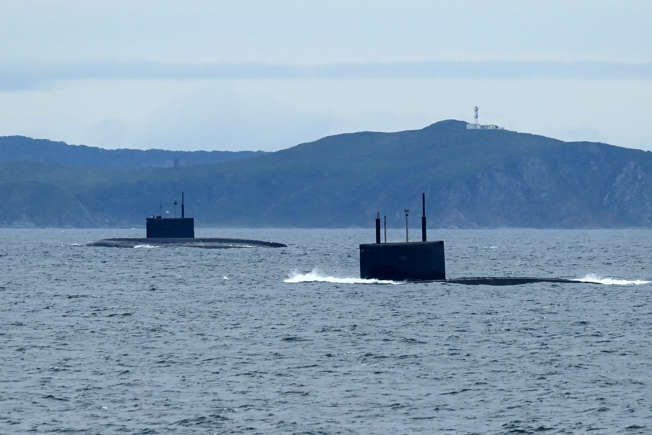
Codenamed "Status-6", the Poseidon is a 78 feet long (24 meters), nuclear-powered crewless submarine vehicle equipped with two-megaton Cobalt-60 nuclear warheads.
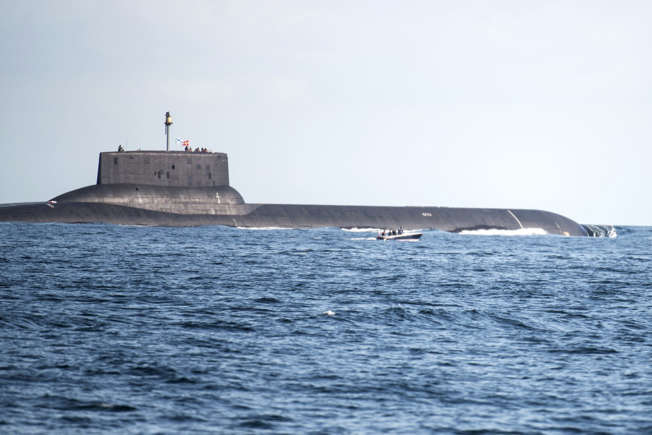
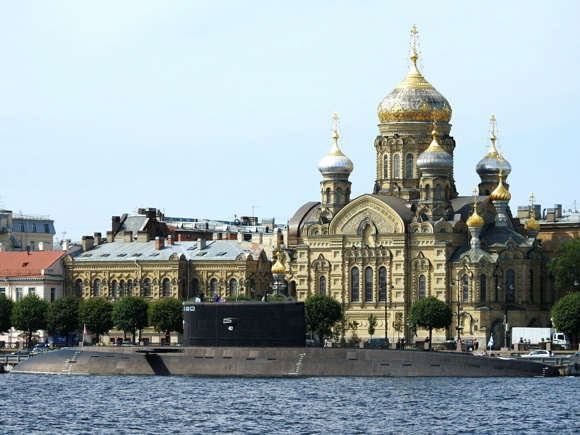
If detonated near a coast, this nuclear torpedo would cause a "radioactive tsunami," with waves up to 1640 feet (500 meters) high, which would also inflict damage inland and, according to simulations by Russian state TV, would demolish entire countries, such as the UK.
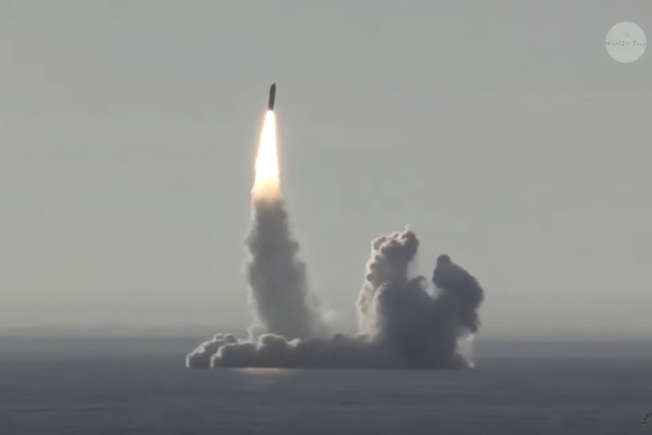
But the Belgorod is not the only Russian weapon that keeps the West on high alert: to keep it company, there are intercontinental ballistic missiles, including the Sarmat.
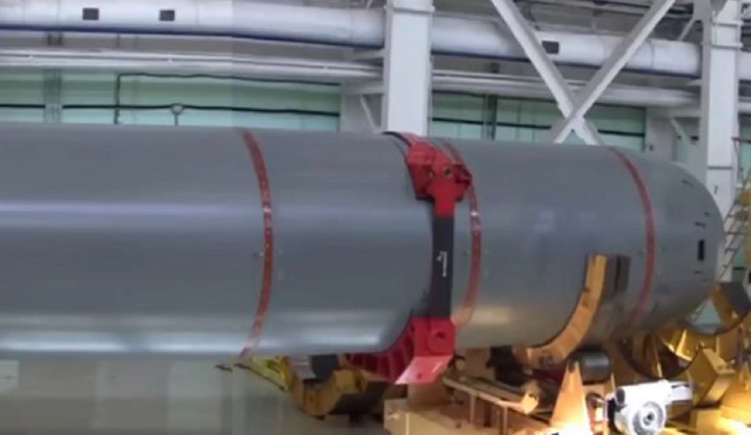
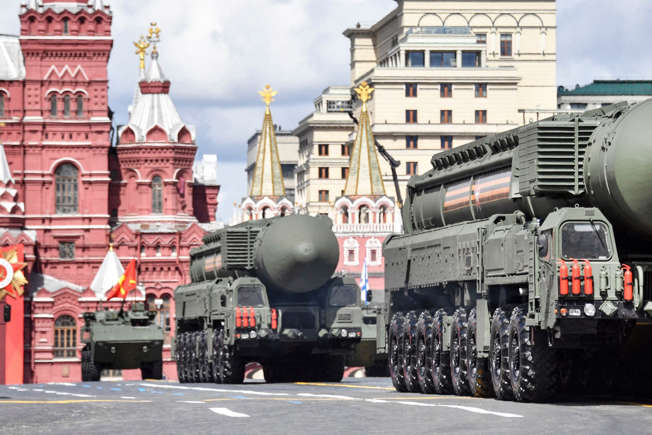
The Sarmat is considered the flagship of the new Russian military programs. According to Al Jazeera, Putin once declared it a weapon that "has no equal" in the world and is "capable of evading any missile defense system." All while carrying 15 nuclear warheads along a flight path up to 11,184 miles (18,000 kilometers).
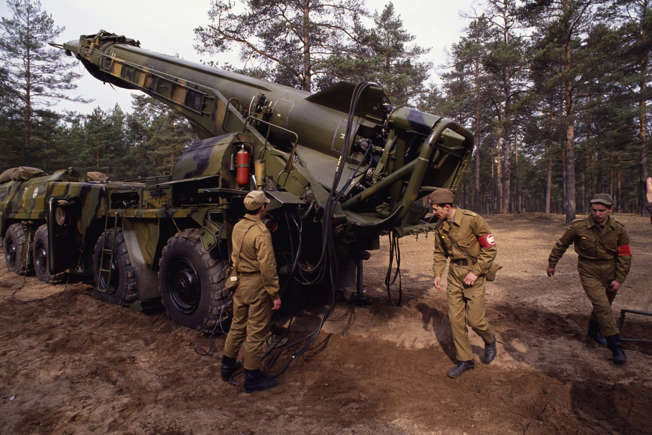
Whether or not Russia will resort to a nuclear weapons or it is only a threat remains to be seen. For example, newspapers such as the New York Times recognize the war potential of the tactical nuclear weapons available to Moscow.
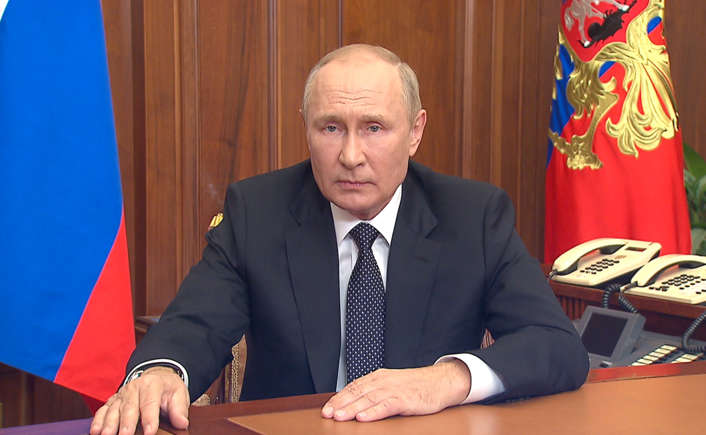
One must also consider another element: the high long-term cost that could discourage the use of such weapons. In addition, such a drastic measure would surely result in a loss of the few allies Putin has left.
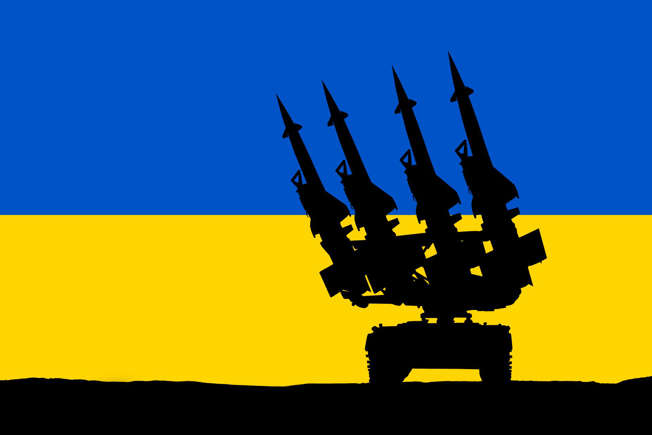
Other newspapers, such as The Guardian, have questioned which target Moscow might try to hit. One of the hypotheses that most convince analysts is that if Putin decided to use nuclear arms, it would be with a tactical nuclear weapon limited to the Ukrainian territory, towards a strategic base, or a specific unit of the Ukrainian army.
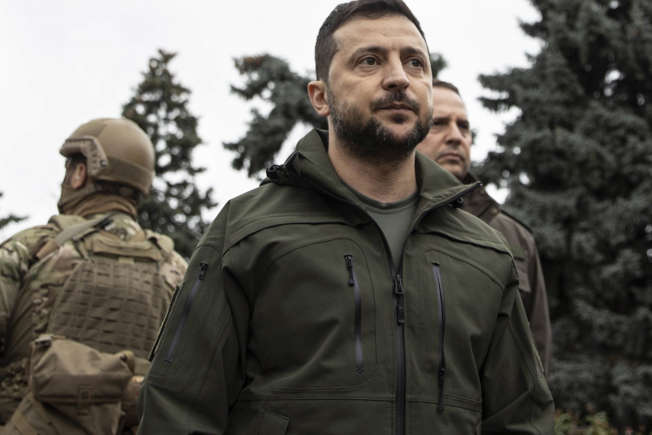
In this case, NATO, in theory, could not intervene directly to defend Ukraine by attacking Russian territory. Nor could NATO intervene by using either conventional or nuclear weapons since, despite Zelensky's repeated requests, Ukraine is not a part of the Alliance. If NATO intervened, then the scale of the conflict would most likely become global.
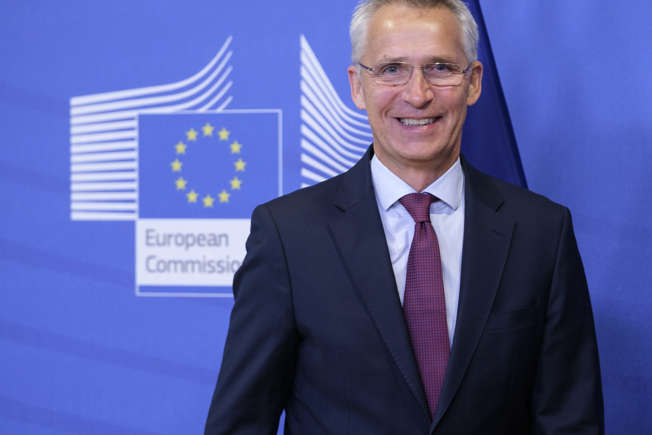
In the aftermath of the referendum on the annexation of the four Ukrainian territories to Russia, in a press conference, Jens Stoltenberg (pictured), NATO secretary, clarified the Alliance's position regarding "nuclear blackmail." Stoltenberg called the Russian leader's "nuclear rhetoric" dangerous, warning that "NATO is vigilant, monitors what Russia's military forces do."
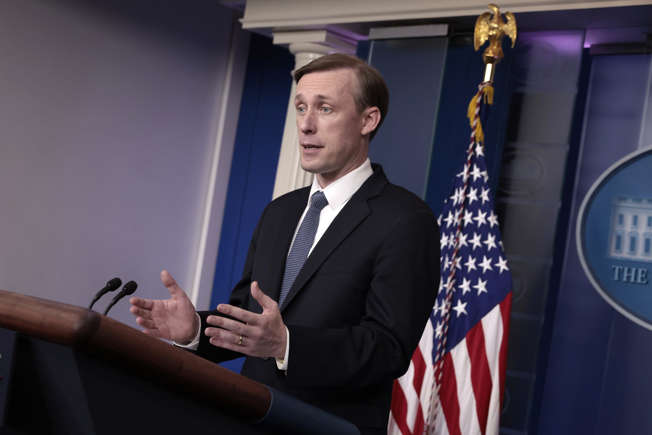
The national security advisor of the United States, Jake Sullivan, made the country's stanceHere’s what Beijing has added to its military might this past year
China has undergone a major expansion of its nuclear arsenal according to new reports and the numbers far exceed past projections. Here’s what we know about China’s latest nuclear capabilities and what that means for the world. on Putin's nuclear threats clear during a press conference at the White House on September 30, 2022. Sullivan told reporters that the United States was taking the risk very seriously and communicating directly with Russia about the issue, including about decisive responses the United States would take if Moscow went down "that dark road."
Russia's nukes and why Putin scares world leaders so much (msn.com)
The Daily Digest, China has seriously expanded its nuclear arsenal and that's worrying, Story by Zeleb.e
The Daily Digest
China has seriously expanded its nuclear arsenal and that's worrying (msn.com)
https://ChChina’s success
A key to China’s future success will be its “new fast breeder reactors and reprocessing facilities” the report commented, which it noted will be used to “produce plutonium for its nuclear weapons program” despite China saying the tech is used for peaceful purposes. ina’s success
A key to China’s future success will be its “new fast breeder reactors and reprocessing facilities” the report commented, which it noted will be used to “produce plutonium for its nuclear weapons program” despite China saying the tech is used for peaceful purposes. www.msn.com/en-ie/
images/PutinScaresWorldLeadersP30.png
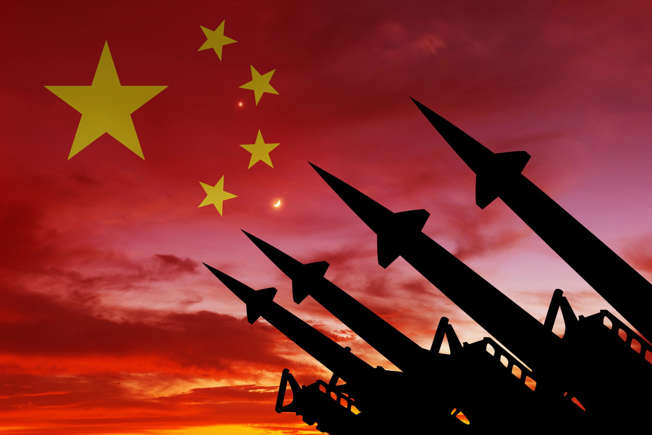
China has undergone a major expansion of its nuclear arsenal according to new reports and the numbers far exceed past projections. Here’s what we know about China’s latest nuclear capabilities and what that means for the world.
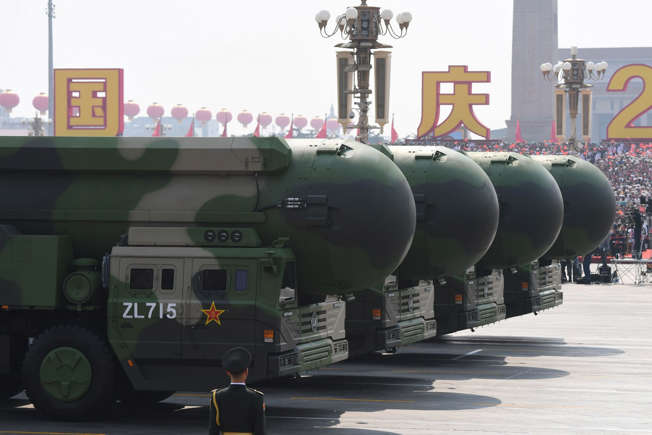
The U.S. Department of Defense believes that China has roughly 500 nuclear warheads in its arsenal as of May 2023 according to the department's annual China Military Power Report. This should be worrying for any government.

China’s Developing a larger nuclear arsenal
China is developing its nuclear arsenal at a scale and complexity that has not been seen in the country before, which includes expanding the amount of land, sea, and air-based delivery platforms China can draw in the future. current nuclear inventory includes one hundred more warheads than it did in the previous year, a statistic that shows the country’s ability to rapidly assemble advanced nuclear weaponry on par with other leading states.
images/PutinScaresWorldLeadersP33.png
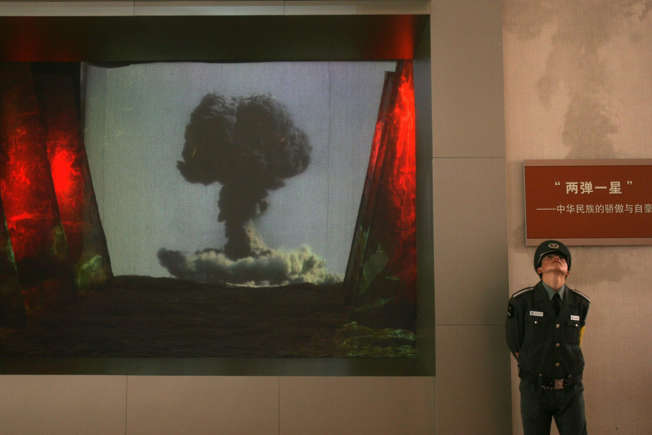
The Department of Defense noted in its report on China’s military power that Beijing will continue to “rapidly moderDeveloping a larger nuclear arsenal
China is developing its nuclear arsenal at a scale and complexity that has not been seen in the country before, which includes expanding the amount of land, sea, and air-based delivery platforms China can draw in the future. nize, diversify, and expand its nuclear forces” and added that the country’s modernization dwarfs previous efforts.
images/PutinScaresWorldLeadersP34.png

China is developing its nuclear arsenal at a scale and complexity that has not been seen in the country before, which includes expanding the amount of land, sea, and air-based delivery platforms China can draw in the future.
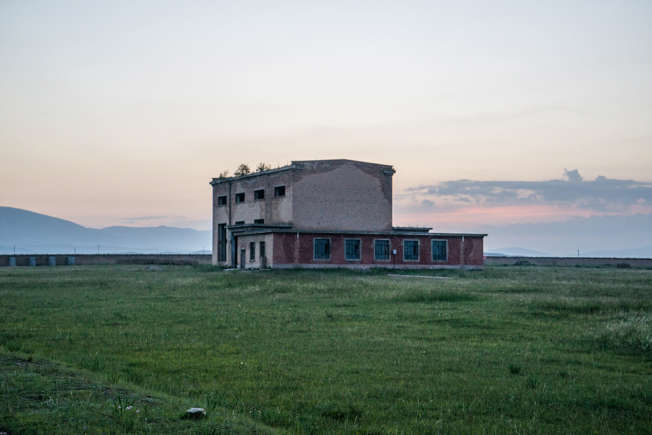
Moreover, investment and construction have also expanded and the report remarked that China will “probably have over 1,000 operational nuclear war China’s readiness level
Many of the new nuclear weapons being added to China’s arsenal will be deployed at a level of readiness that will allow Beijing to continue the growth of its nuclear arsenal and put China on track to complete its modernization. warheads by 2023.”
However, this isn’t the most worrying finding of the report.
images/PutinScaresWorldLeadersP35.png
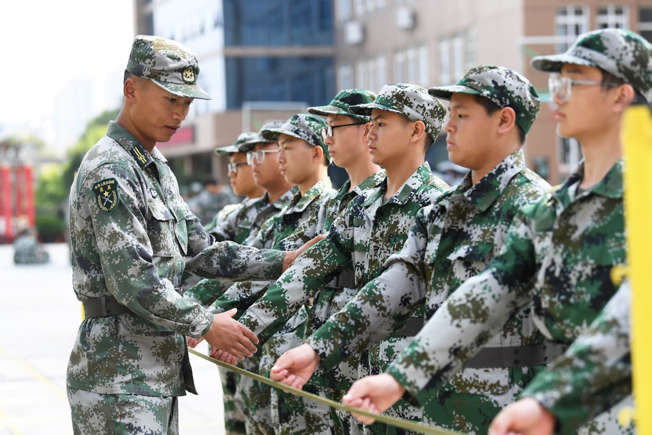
Many of the new nuclear weapons being added to China’s arsenal will be deployed at a level of readiness that will allow Beijing to continue the growth of its nuclear arsenal and put China on track to complete its modernization.
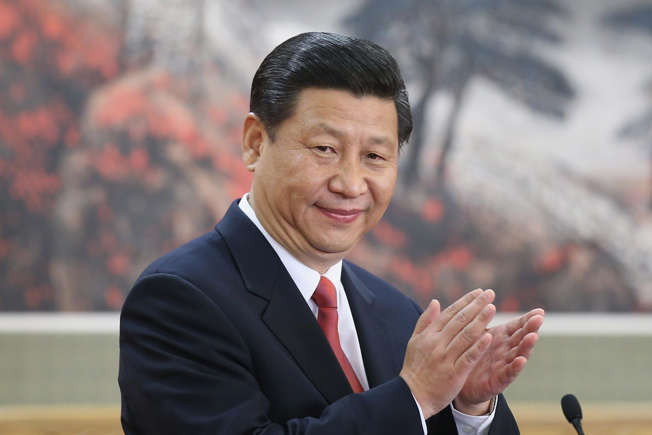
The Department of Defense estimated that China will reach President Xi Jinping’s goal of becoming a world-class military power by 2049, meaning Beijing would be able to go toe-to-toe with the United States in a possible war.
images/PutinScaresWorldLeadersP38.png

“What they’re doing now, if you compare it to what they were doing about a decade ago, it really far exceeds that in terms of scale and complexity,” an unnamed Department of Defense official told Politico about China’s efforts.
images/PutinScaresWorldLeadersP38.png

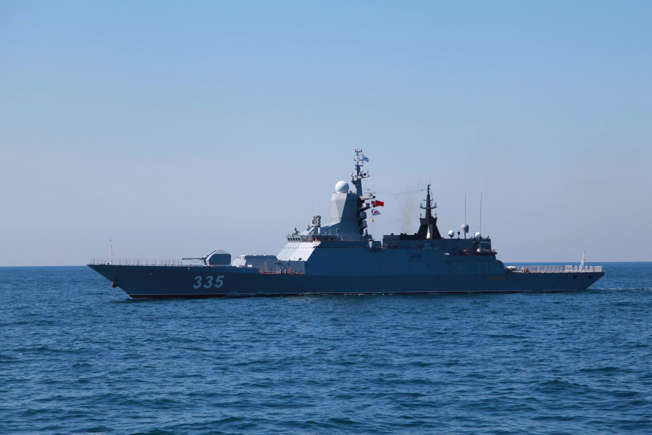
“They’re expanding and investing in their land, sea, and air-based nuclear delivery platforms, as well as the infrastructure that’s required to support this quite major expansion of their nuclear forces,” the official added.

A key to China’s future success will be its “new fast breeder reactors and reprocessing facilities” the report commented, which it noted will be used to “produce plutonium for its nuclear weapons program” despite China saying the tech is used for peaceful purposes.
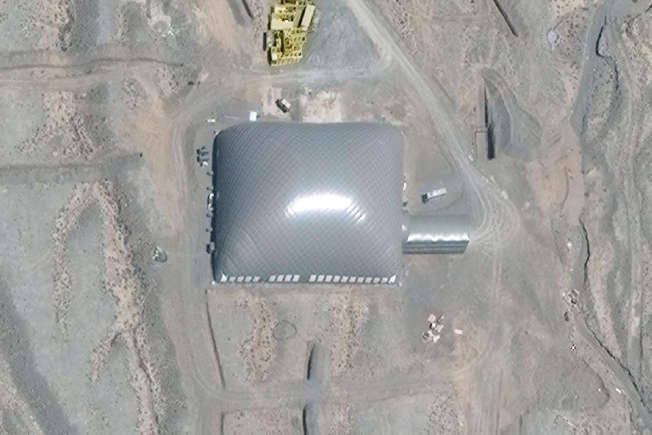
The construction of three new solid-propellent fuel silo fields was completed in 2022 and these fields can house as many as 300 new intercontinental ballistic missile silos, which will give the country a greater nuclear readiness.
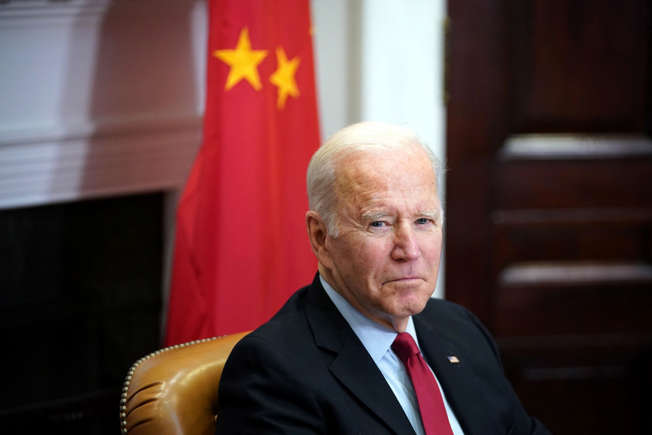
“This obviously raises a lot of concerns for us,” a senior defense official explained about the Chinese nuclear issue on October 18th. “What we’d really like to see is for them to be more transparent about their nuclear buildup.
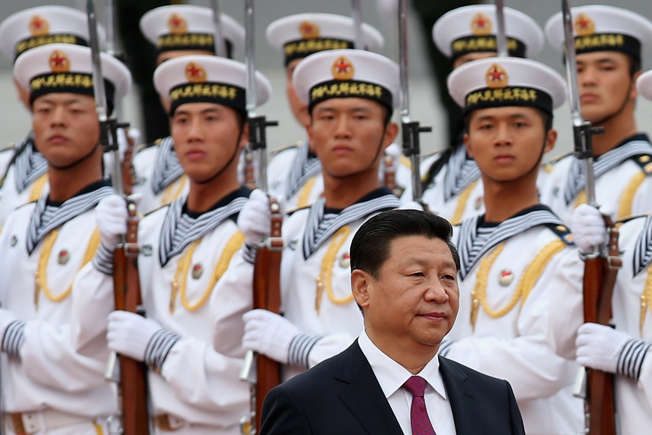
CNN noted the defense official added the United States wanted to see “greater interest” on the Chinese side to discuss “strategic stability and risk reduction issues.” However, it is unclear if that will happen in the future.
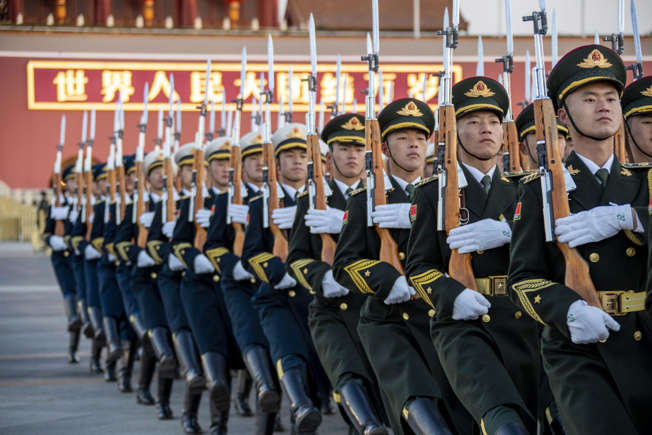
China has moved toward a far more aggressive international posture in recent years as part of the country’s mission to revamp the Chinese image on the world stage and turn China into one of the world’s leading powers.
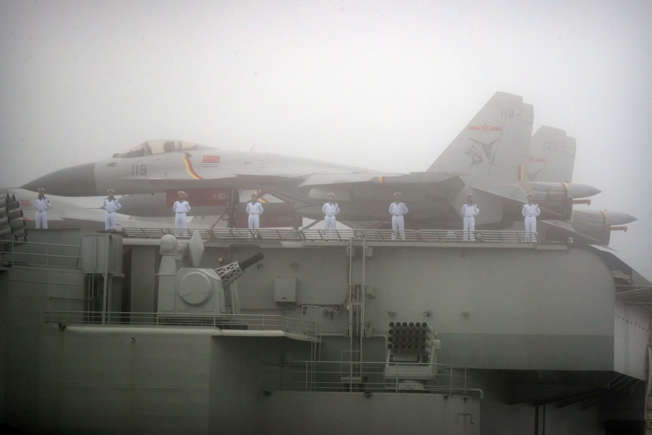
Military expansion in China isn’t limited to its nuclear arsenal according to the report by the Department of Defense, which wrote that Beijing has also expanded the country’s submarine and surface ships assets by 30 vessels.
China has seriously expanded its nuclear arsenal and that's worrying (msn.com)
China has seriously expanded its nuclear arsenal and that's worrying (msn.com)

China’s defense budget was also increased by 7.1% which may help Beijing bridge its current military gaps. At present, China is far behind the U.S. and Russia in its nuclear capacity with America’s arsenal sitting at 5224 and Russia’s at 5,880, Politico reported.
Putin’s closest media ally warns about coming world war, Story by Zeleb.es •
The Daily Digest
Putin’s closest media ally warns about coming world war (msn.com)

One of Vladimir Putin’s closest allies in Russian media warned of a coming world war he claims will be fought between the West and Muslim nations supported by Russian arms and weapons. Here’s what was said and why it matters.
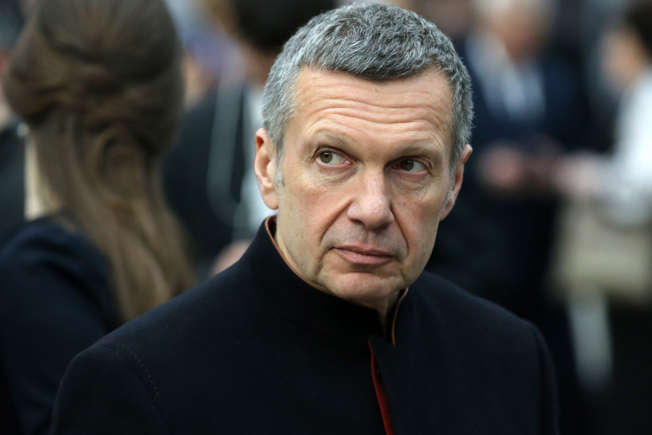
Vladimir Solovyov is believed to be one of the “most influential propagandists in Russia” according to Politico and has been the host of the popular television show “Evening with Vladimir Solovyov” on the Russia-1 channel since 2012.
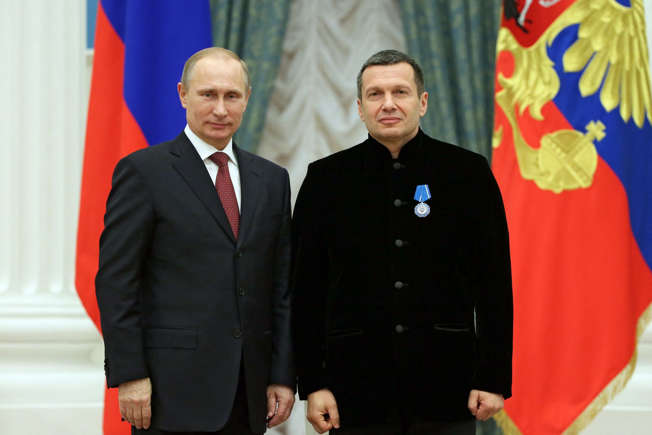
The U.S. The State Department reported Solovyov was once a fierce critic of the Kremlin but has become one the greatest uncritical supporters of President Putin and often uses his platform to spread both propaganda and disinformation.
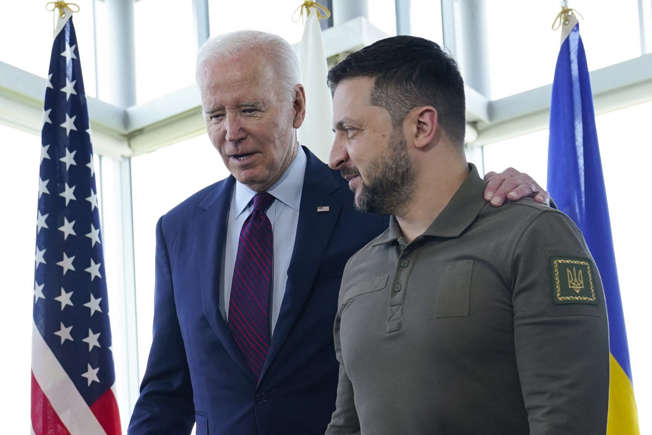
With that in mind, it would make sense that during one of Solovyov’s latest episodes, he spent time railing against the U.S. for sending Army Tactical Missile Systems (ATACMS) to Ukraine, calling on Russia to supply America’s enemies.
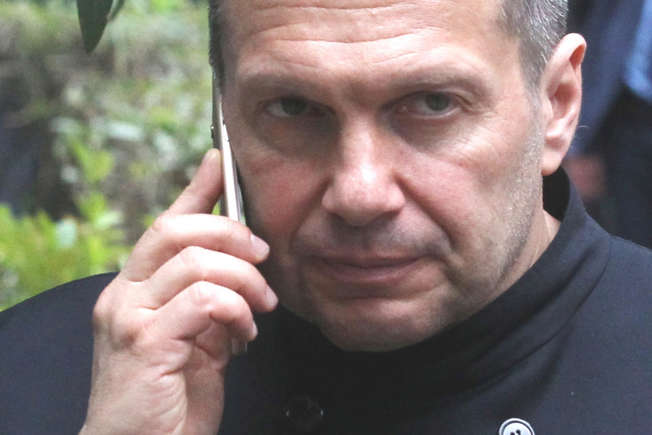
Solovyov’s remarks were translated on YouTube by Russian Media Monitor, which is an independent project dedicated to monitoring Russian media and propaganda, and were reported on by Newsweek. Here’s what Solovyov said.
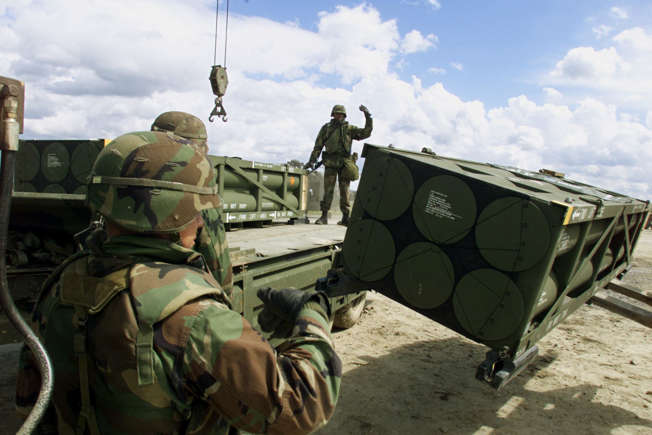
"They delivered ATACMS. We should deliver everything America's enemies need," the Russian media figure remarked. "To all of them! Any weapons that they need!” Solovyov continued before adding in his distinct theatrical flare.
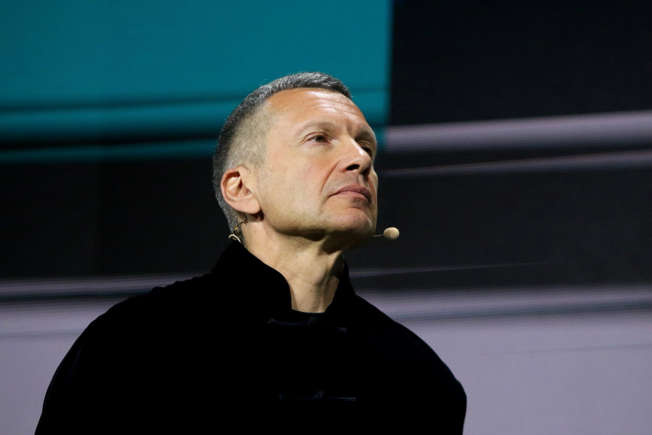
"To make sure there is not one spot on this Earth where soil doesn't burn under the feet of these neo-colonialist critters,” Solovyov said. It may sound hyperbolic but Solovyov's commentary is typical of what can be heard on his show.
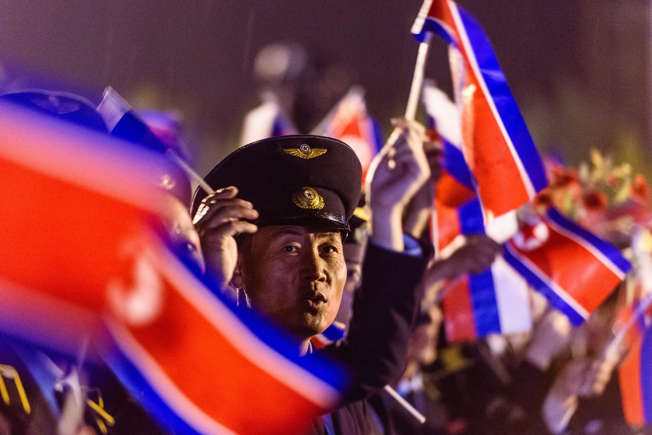
The Russian propagandists went on to say that if the United States was supplying arms to Russia’s enemies to kill Russian people then the government would be providing weapons to North Korea, Syria, and anyone else that wanted them.
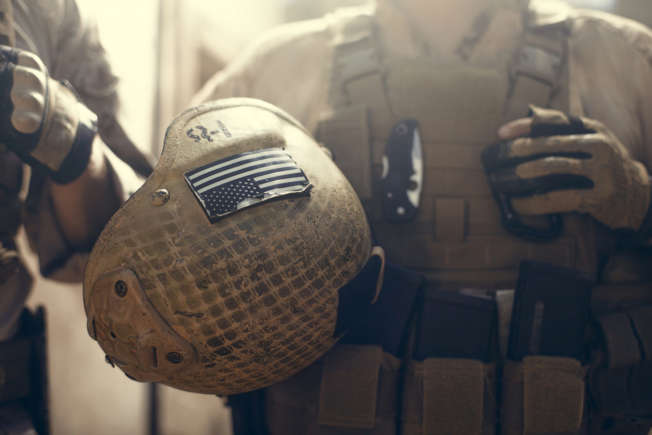
Soloyvov said that Russia should give America’s enemies “everything” so that not one American soldier would feel safe while on foreign territory. Then he went on to declare to his audience that a new world war was coming.
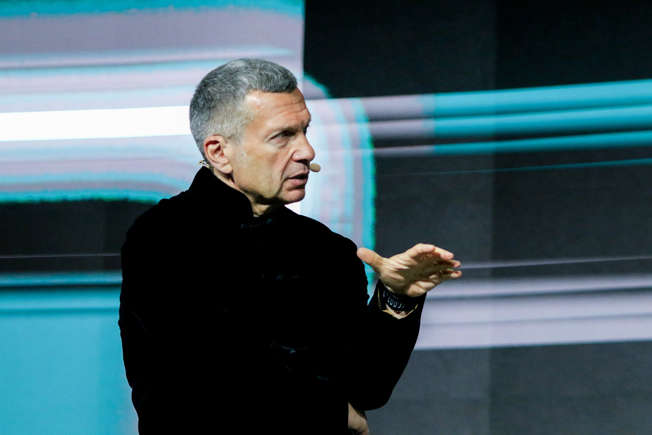
"Do you even understand what will happen if a global jihad will start?" Solovyov stated, with Newsweek reporting that he went on to claim that nobody could grasp the reality of what could happen if a religious war were called, all of which would be the West’s fault.
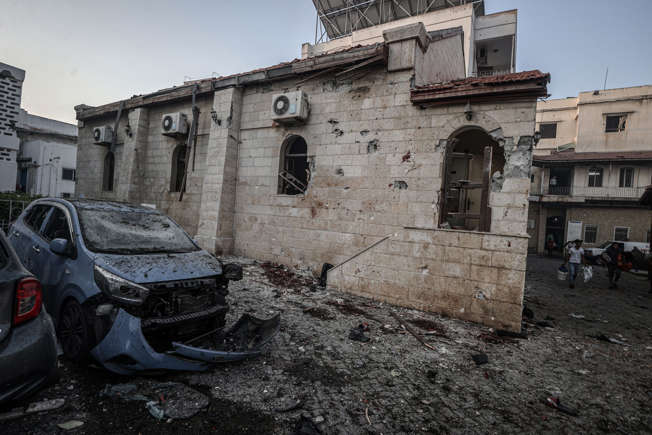
Solovyov made his comments in the immediate aftermath of the bombing at the al-Ahli Hospital in Gaza City, and his remarks were a good example of how the presenter uses world events to shape a Russian narrative that fits within the Kremlin’s messaging.
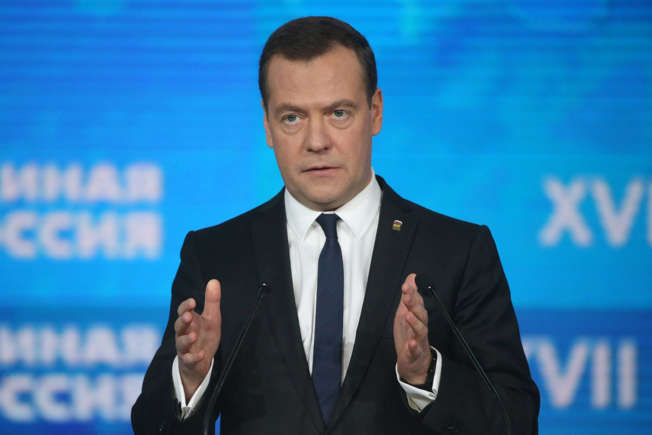
However, there is a real possibility the conflict unfolding in the Middle East could result in a large regional war, something that the former Russian President and current Deputy Chairman of the Russian Security Council Dmitry Medvedev commented on.
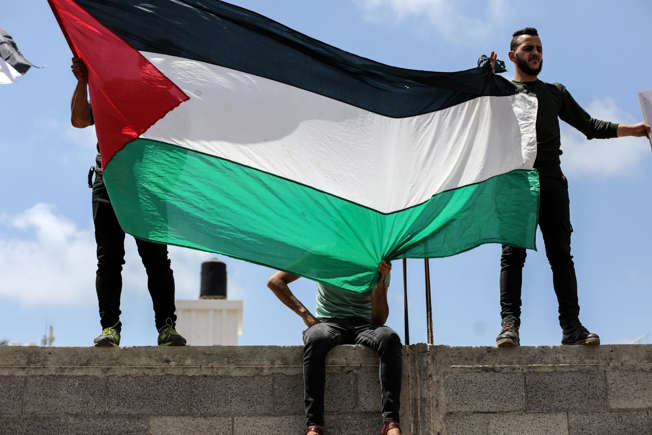
“The Middle East is seeing another war. A cruel war without rules. A war based on terror and the doctrine of disproportionate use of force against the civilian population. As it is said today, both sides have gone 'berserk,'" Medvedev told Russia’s Izvestia.
